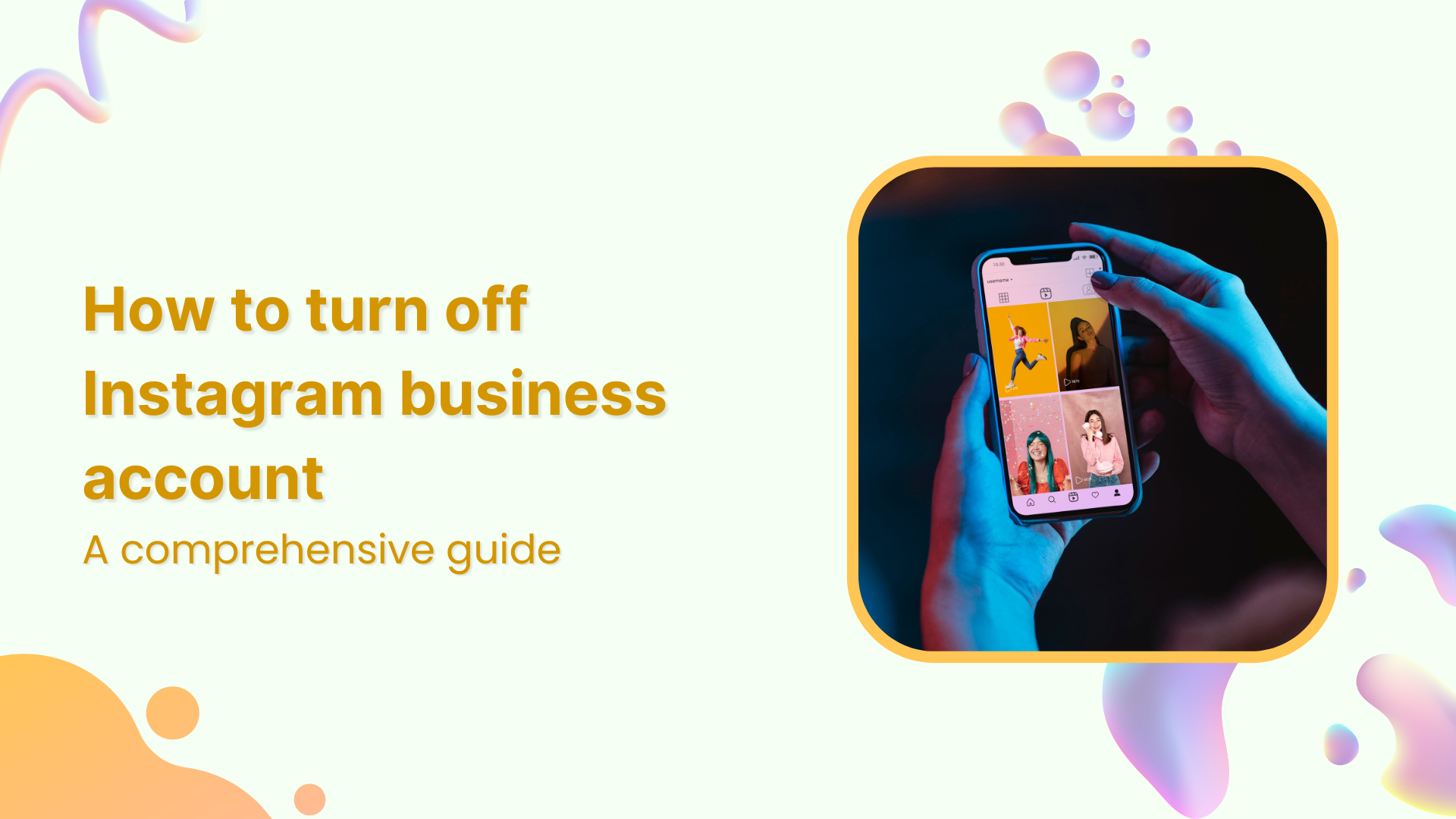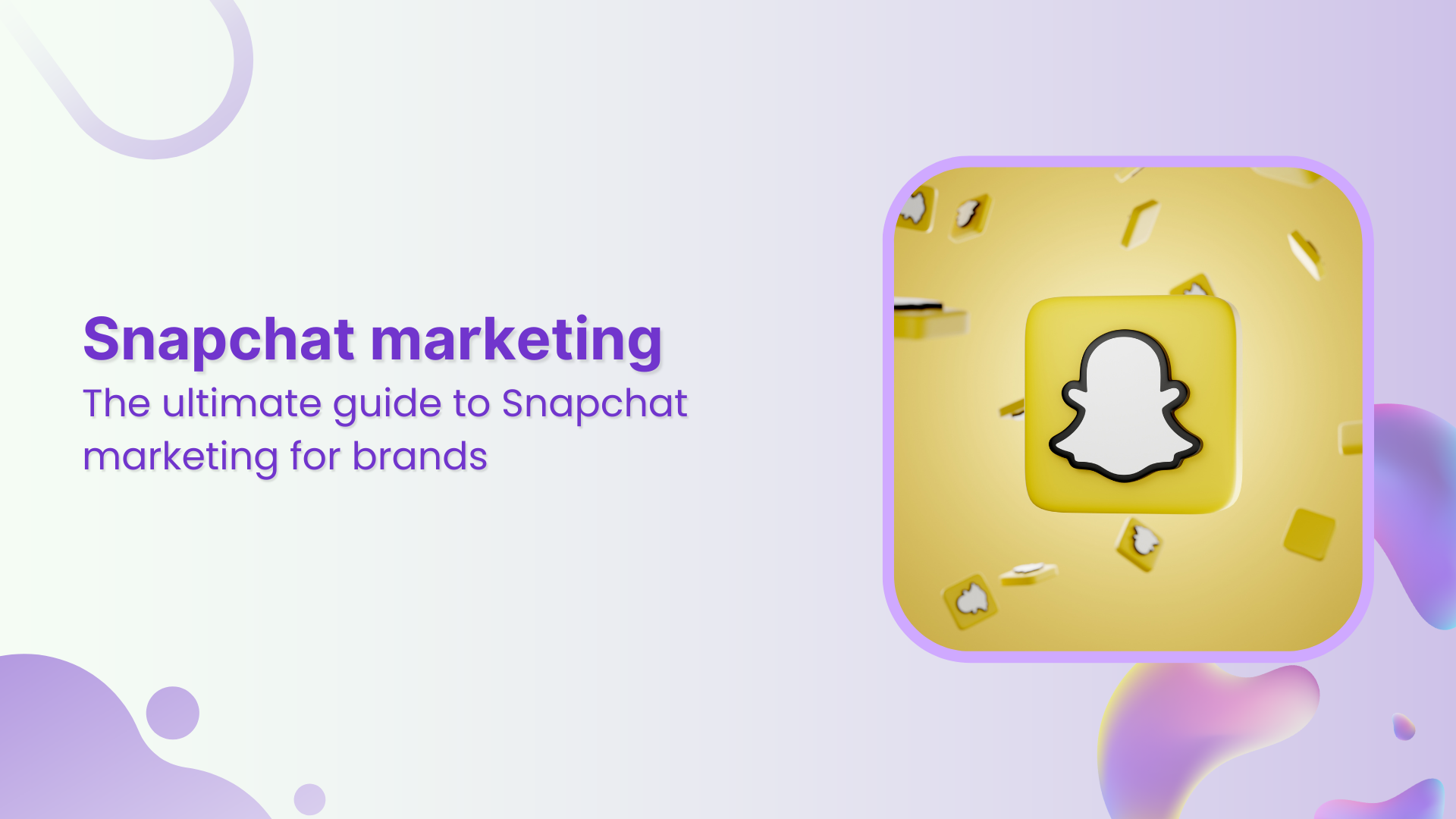Bulk-generate & schedule posts in seconds with Smart Scheduling. Try now!
How to create a high ROI social media campaign in 2025
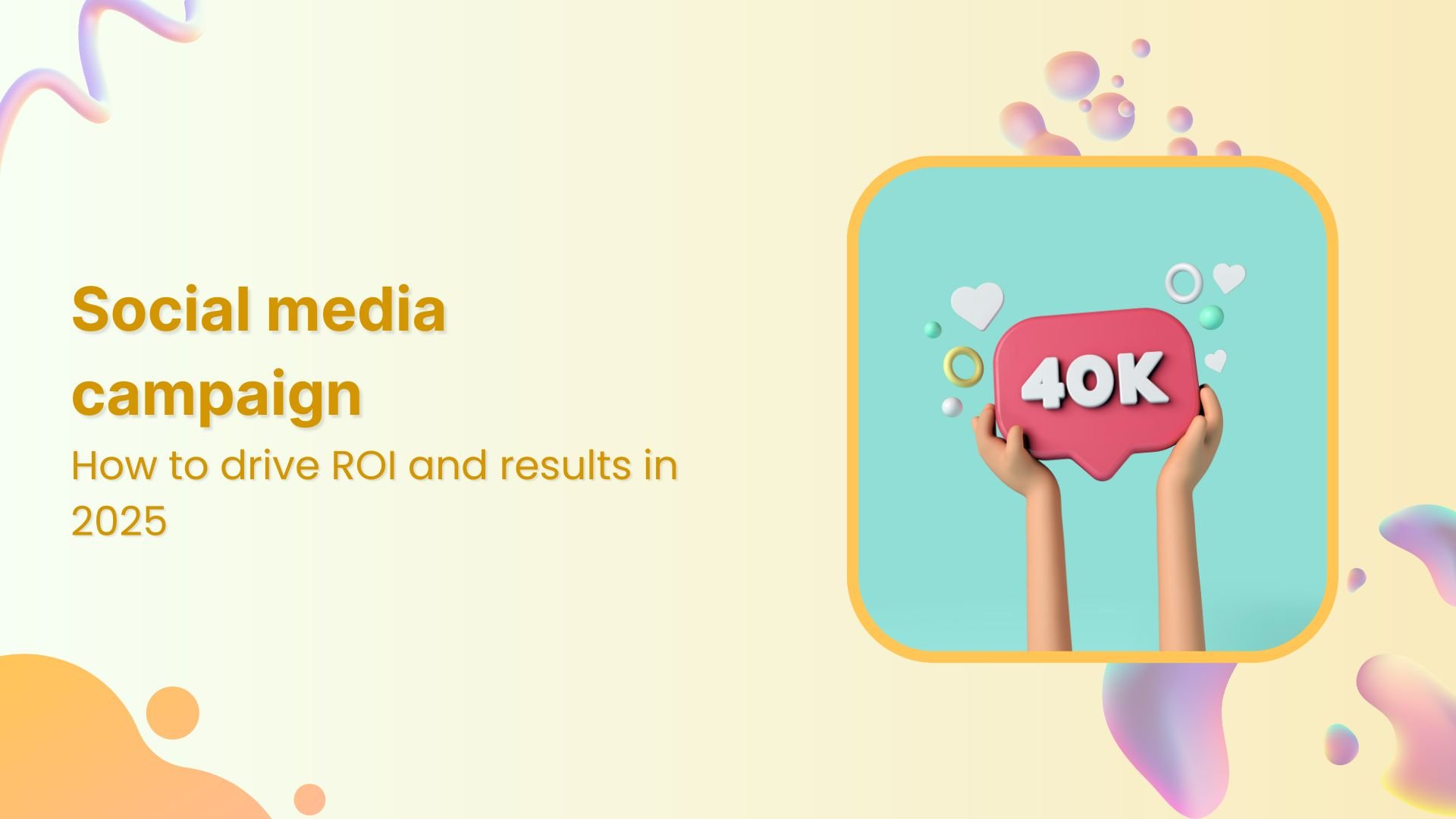
The fact that there are over 5 billion social media users in the world is proof that you need a proper structure and strategy to succeed on social media platforms. It is possible with a well-designed social media campaign.
But if you are wondering what exactly a social media campaign is and how you can create a campaign with a high return on investment (ROI), you are in the perfect place!
The highly competitive state of social media means simply posting content isn’t enough. Successful brands, influencers, and users are those that strategically design campaigns that not only capture attention but also drive real business outcomes.
This comprehensive guide will walk you through everything you need to know about building social media campaigns that deliver exceptional returns on investment. From understanding the fundamentals to implementing advanced strategies, you’ll discover proven methods to maximize your campaign effectiveness and achieve your social media business objectives.
What is a social media campaign?
A social media campaign is a coordinated marketing effort that uses one or more social media sites to achieve specific business objectives within a defined timeframe. Unlike regular social media posting, campaigns are strategic, focused initiatives that align content, timing, and resources toward accomplishing measurable social media goals.
The social media campaign definition includes organizing promotional activities that use the unique features and audiences of platforms like Facebook, Instagram, LinkedIn, X (Twitter), TikTok, and YouTube to drive brand awareness, engagement, conversions, or other key performance indicators.
These campaigns typically involve multiple touchpoints, consistent messaging, and targeted content designed to guide audiences through a specific customer journey, starting from initial awareness to final conversion.
Core components of a social media campaign
A typical social media marketing campaign includes several core components:
- Clear objectives aligned with broader business goals
- Defined target audience based on demographics, interests, and behaviors
- Compelling creative assets, including visuals, videos, and copy
- Strategic timing and scheduling for maximum impact
- Dedicated budget for organic and paid promotion
- Performance metrics to track success and ROI
Benefits of social media campaigns
Strategic social media campaigns offer numerous advantages over random posting:
- Improve brand visibility: Coordinated campaigns amplify your message across multiple touchpoints, increasing the likelihood of reaching and resonating with your target audience.
- Greater ROI: By focusing resources on specific objectives and tracking social media metrics, campaigns deliver more measurable and cost-effective results than scattered efforts.
- Stronger audience engagement: Campaigns create cohesive narratives that encourage deeper interaction, fostering stronger relationships between brands and consumers.
- Data-driven insights: Campaign structures provide clearer frameworks for collecting and analyzing performance data, enabling continuous optimization and improvement.
- Competitive advantage: Well-executed campaigns help brands stand out in crowded digital spaces, establishing thought leadership and market positioning.
Types of social media campaigns
Understanding the different campaign types helps you choose the right approach for your specific goals. Here are the most effective social media campaign formats in 2025:
Social media marketing campaign
A social media marketing campaign focuses primarily on promoting products, services, or offers to drive sales and revenue. These campaigns typically feature promotional content, special discounts, limited-time offers, and compelling calls-to-action that encourage immediate purchase decisions.
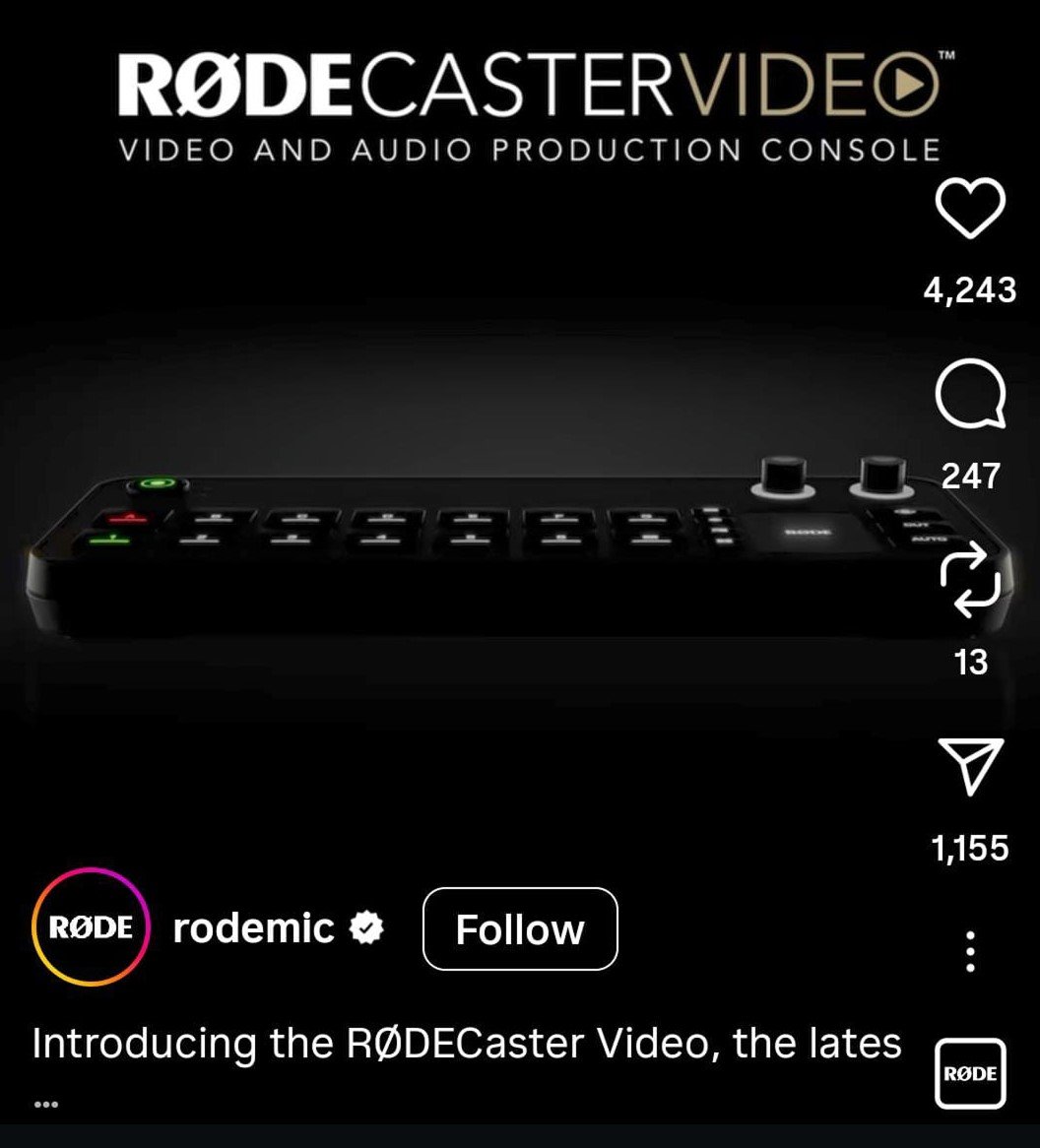
Marketing campaigns use both organic content and paid advertising to reach potential customers at various stages of the buyer’s journey. They often incorporate retargeting strategies to re-engage users who have previously shown interest in your offerings.
Best for: E-commerce businesses, product launches, seasonal promotions, and direct response marketing.
Social media awareness campaign
Awareness campaigns aim to increase visibility and recognition for your brand, cause, or message among new audiences. Rather than pushing for immediate conversions, these campaigns focus on introducing your brand story, values, and unique selling propositions to people who may not be familiar with you.
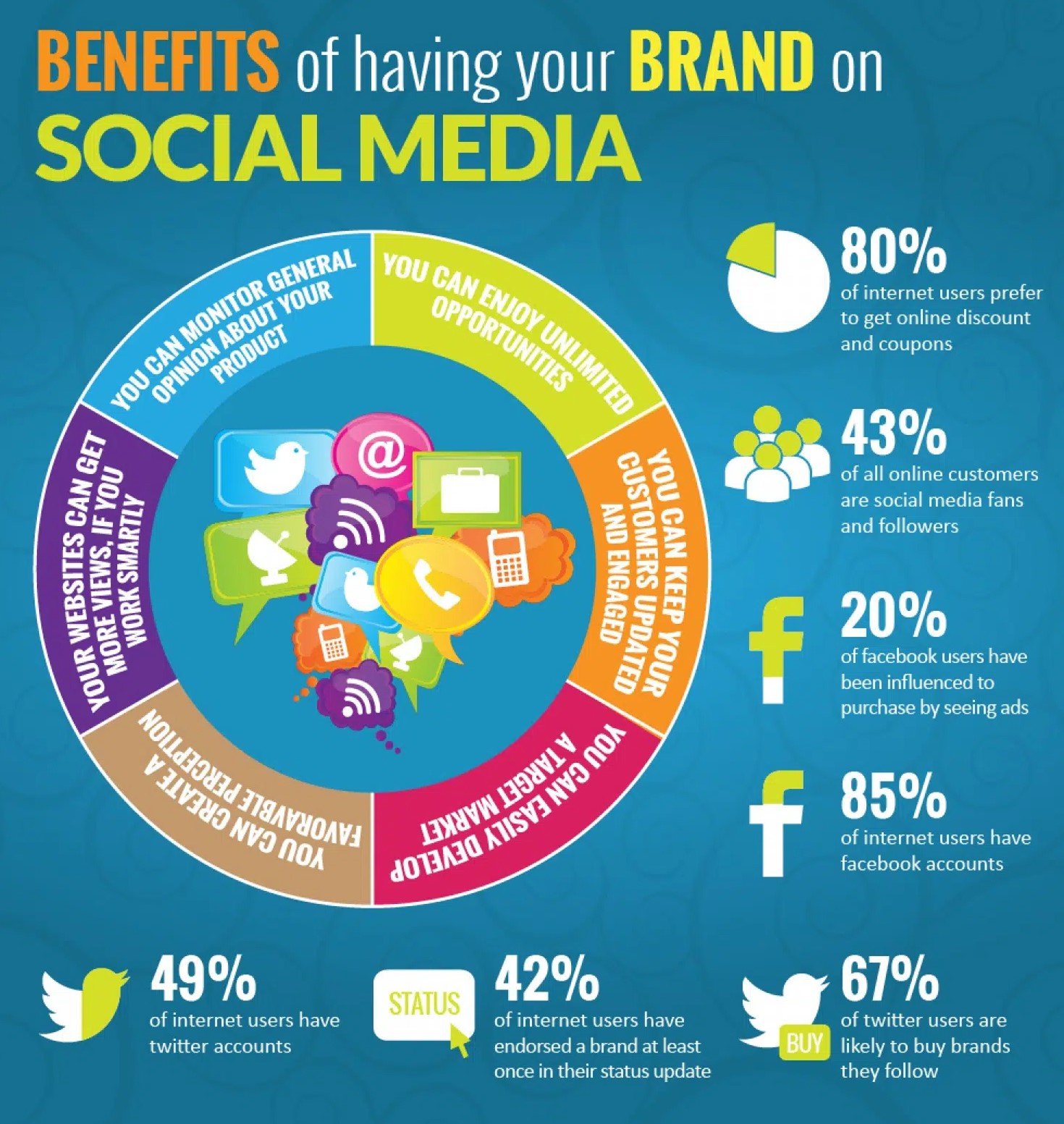
These campaigns typically use engaging storytelling, eye-catching visuals, influencer partnerships, and broad targeting to maximize reach. Success is measured through impressions, reach, brand mention growth, and share of voice metrics.
Best for: New businesses, rebranding efforts, nonprofit organizations, and companies entering new markets.
Engagement campaign
Engagement campaigns prioritize interaction and community building over direct sales. They encourage audiences to like, comment, share, participate in polls, submit user-generated content, or join conversations around specific topics.
These campaigns build deeper connections with your audience, improve algorithm favorability (since platforms reward content that generates engagement), and create social proof that attracts new followers. Common tactics include contests, challenges, Q&A sessions, and interactive content.
Best for: Building loyal communities, increasing organic reach, and fostering brand advocates.
Also read: User-generated content (UGC): How to share & why it matters?
Advocacy campaign
Advocacy campaigns mobilize your audience to support a cause, champion your brand, or take action on issues aligned with your values. These campaigns turn customers into vocal supporters who voluntarily promote your message to their networks.
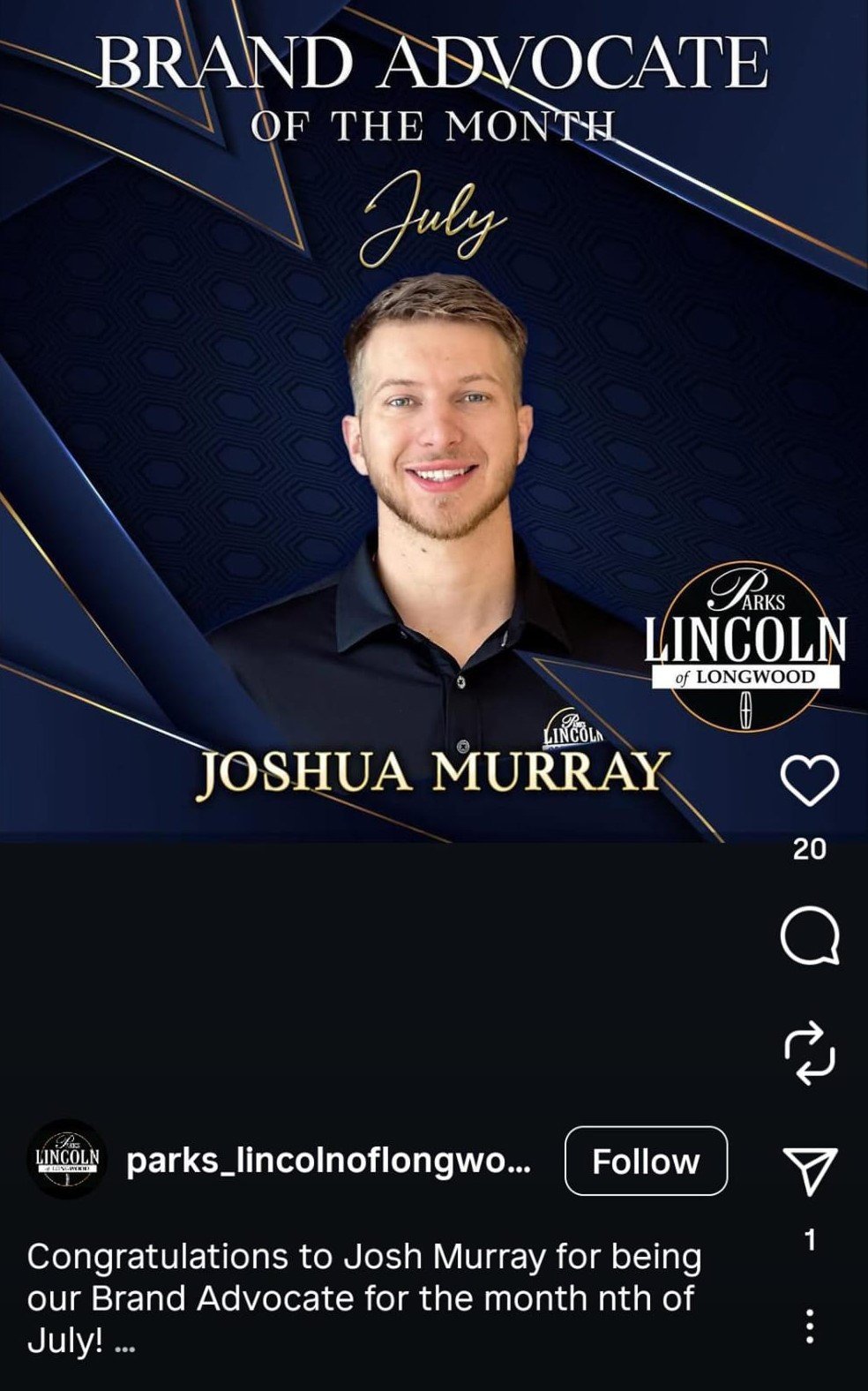
Successful advocacy campaigns tap into emotional motivations, provide clear ways to participate, and often incorporate social proof by showcasing others taking action. Employee advocacy programs, where team members share company content, also fall into this category.
Best for: Purpose-driven brands, companies with strong corporate social responsibility programs, and movements requiring grassroots support.
Related: Brand ambassador: Your complete guide to brand advocacy
Crisis management campaign
When unexpected negative events occur, such as PR incidents, product issues, or external crises affecting your industry, crisis management campaigns help control the narrative, address concerns, and protect brand reputation.
These reactive campaigns require rapid response, transparent communication, empathy, and consistent messaging across all platforms. They focus on acknowledging issues, sharing solutions, and rebuilding trust with affected audiences.
Best for: Addressing negative publicity, product recalls, service disruptions, or controversial incidents.
Also read: How to create a social media crisis communication plan?
Educational campaign
Educational campaigns position your brand as a thought leader by providing valuable information, tutorials, tips, and insights that help your audience solve problems or improve their lives. Rather than selling directly, these campaigns build authority and trust that eventually lead to conversions.
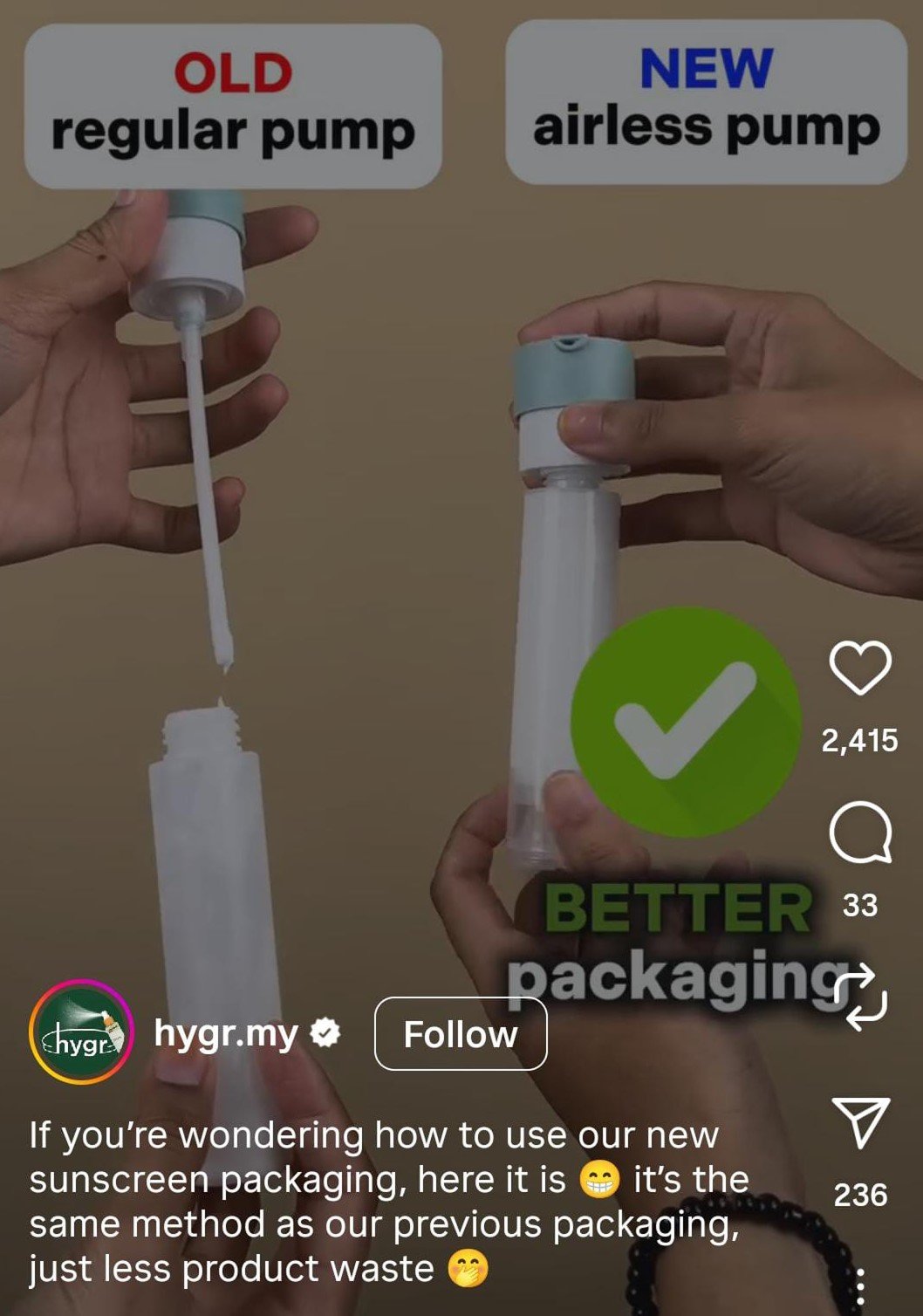
Content formats include how-to videos, webinars, infographics, expert interviews, and comprehensive guides. Educational campaigns work particularly well for complex products or services that require customer education before purchase.
Best for: B2B companies, SaaS products, financial services, healthcare, and technical industries.
Social media campaigns for events
Event campaigns promote and build excitement around upcoming events, such as physical conferences, virtual webinars, product launches, or community gatherings. They drive registrations, encourage attendance, and extend event impact through live coverage and post-event content.
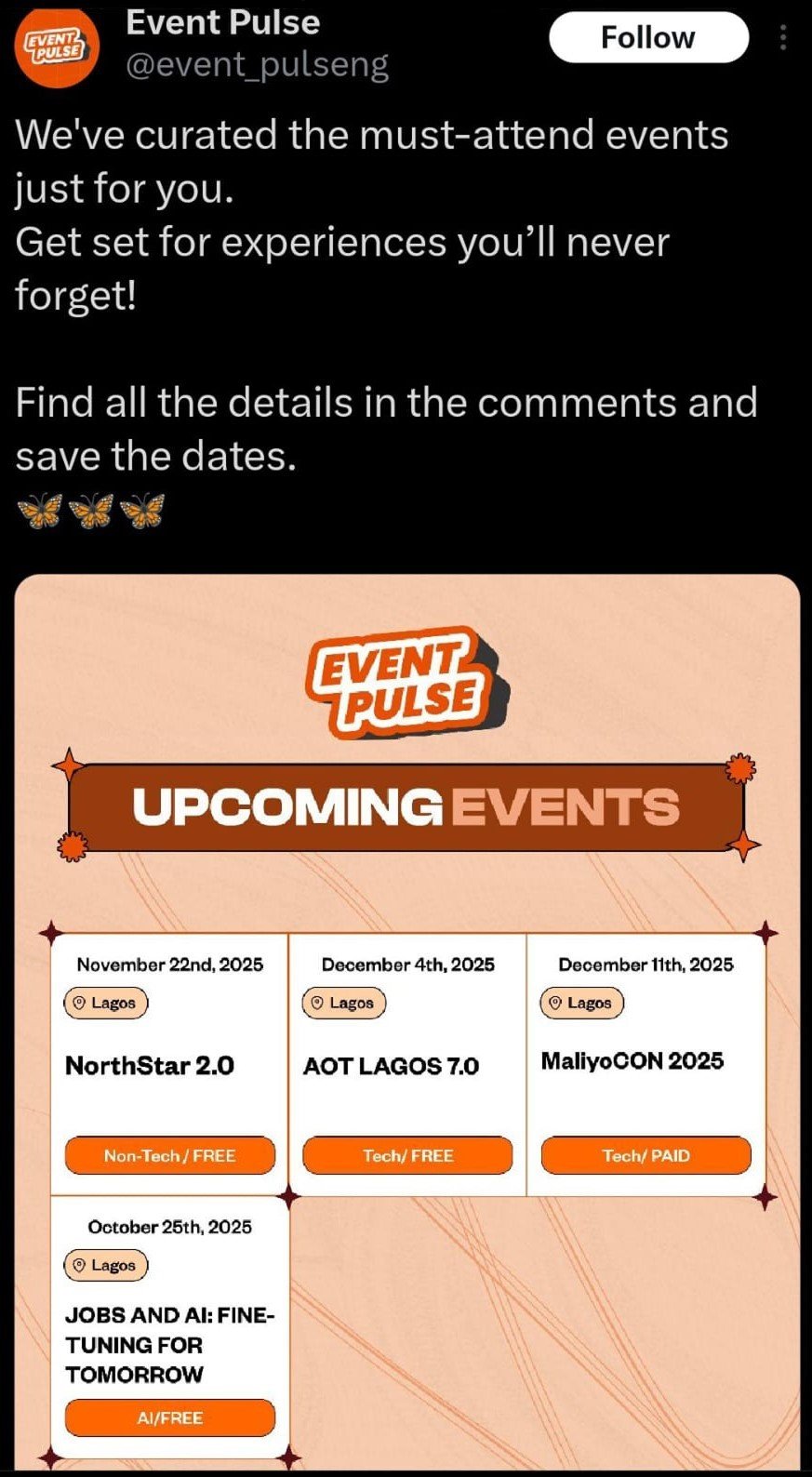
These campaigns typically follow a timeline that includes pre-event teasers, countdown content, live updates during the event, and post-event highlights. They often incorporate event-specific hashtags, speaker features, and behind-the-scenes content.
Best for: Conferences, trade shows, webinars, product launch events, and community meetups.
How to create a social media campaign?
Creating a successful social media campaign requires systematic planning and execution. Whether you’re learning how to create an effective social media campaign for the first time or refining your approach, following a structured process dramatically increases your chances of achieving meaningful results.
Social media campaign plan
A comprehensive social media campaign plan serves as your roadmap, ensuring all team members understand objectives, responsibilities, and timelines.
Here’s how to develop an effective social media campaign plan:
1. Define clear objectives: Start by establishing specific, measurable goals that align with your broader business objectives. Whether you’re aiming for brand awareness, lead generation, or sales conversions, your objectives should be SMART (Specific, Measurable, Achievable, Relevant, Time-bound).
2. Identify your target audience: Develop detailed buyer personas that include demographic information, interests, pain points, and social media behaviors. Understanding your audience’s preferences, active platforms, and content consumption habits is crucial for campaign success.
3. Choose the right platforms: Select social media platforms where your target audience is most active and engaged. Consider each platform’s unique features, content formats, and user demographics to ensure optimal reach and engagement.
4. Set your budget and timeline: Establish a realistic budget that covers content creation, advertising spend, tools, and personnel costs. Create a detailed social media campaign timeline that outlines key milestones, content publication schedules, and performance review points.
5. Develop your content strategy: Plan diverse content types that align with your campaign objectives and platform requirements. This includes visual assets, video content, written copy, interactive elements, and user-generated content initiatives.
Social media campaign strategy
While your plan outlines what you’ll do, your strategy explains how you’ll achieve your objectives through tactical execution:
1. Content creation and curation: Develop a content mix that balances promotional, educational, and entertaining material. Ensure all content aligns with your brand voice and campaign messaging while providing value to your audience.
2. Hashtag strategy: Research and select relevant hashtags that increase discoverability without appearing spammy. Use a combination of popular, niche, and branded hashtags to maximize reach and engagement.
3. Influencer partnerships: Identify and collaborate with influencers whose audiences align with your target demographics. Establish clear partnership terms, content guidelines, and performance expectations.
4. Community management: Plan for active engagement with your audience through timely responses to comments, messages, and mentions. Establish guidelines for handling both positive and negative feedback professionally.
5. Performance tracking: Implement robust analytics tracking to monitor key performance indicators such as reach, engagement rates, click-through rates, conversions, and return on ad spend.
Free social media campaign template
Planning a successful social media campaign becomes significantly easier with a structured template that guides you through every essential element.
Our comprehensive social media campaign template is designed to streamline your planning process while ensuring you don’t miss any critical components.
This user-friendly template allows you to customize and input all the key information needed for your campaign’s success. Simply fill in your campaign title, adjust the duration dates using Canva’s convenient date picker feature, and begin building your strategy.
The template walks you through essential sections, including background research, SMART goals and objectives, detailed target audience analysis with demographic breakdowns, and comprehensive content strategy planning.
Next step: Social media campaign management
Launching your campaign is just the beginning. Effective social media campaign management ensures your campaign stays on track, performs optimally, and delivers the results you’re aiming for.
Campaign management includes monitoring performance, engaging with your audience, troubleshooting issues, and optimizing tactics in real time. It’s the difference between campaigns that sputter and those that soar.
Key campaign management activities include:
- Daily monitoring: Check performance metrics, respond to comments and messages, identify trending conversations, and ensure all scheduled content publishes correctly.
- Performance tracking: Review metrics against benchmarks to identify what’s working and what needs adjustment. Look for patterns in high-performing content to inform future posts.
- Community management: Foster relationships by acknowledging user-generated content, answering questions, addressing concerns, and keeping conversations positive and on-brand.
- Real-time optimization: Adjust underperforming tactics, reallocate budget to high-performing channels, test new creative variations, and capitalize on unexpected opportunities.
- Crisis monitoring: Stay alert for negative sentiment, misinformation, or issues that could escalate, addressing problems quickly before they damage your brand reputation.
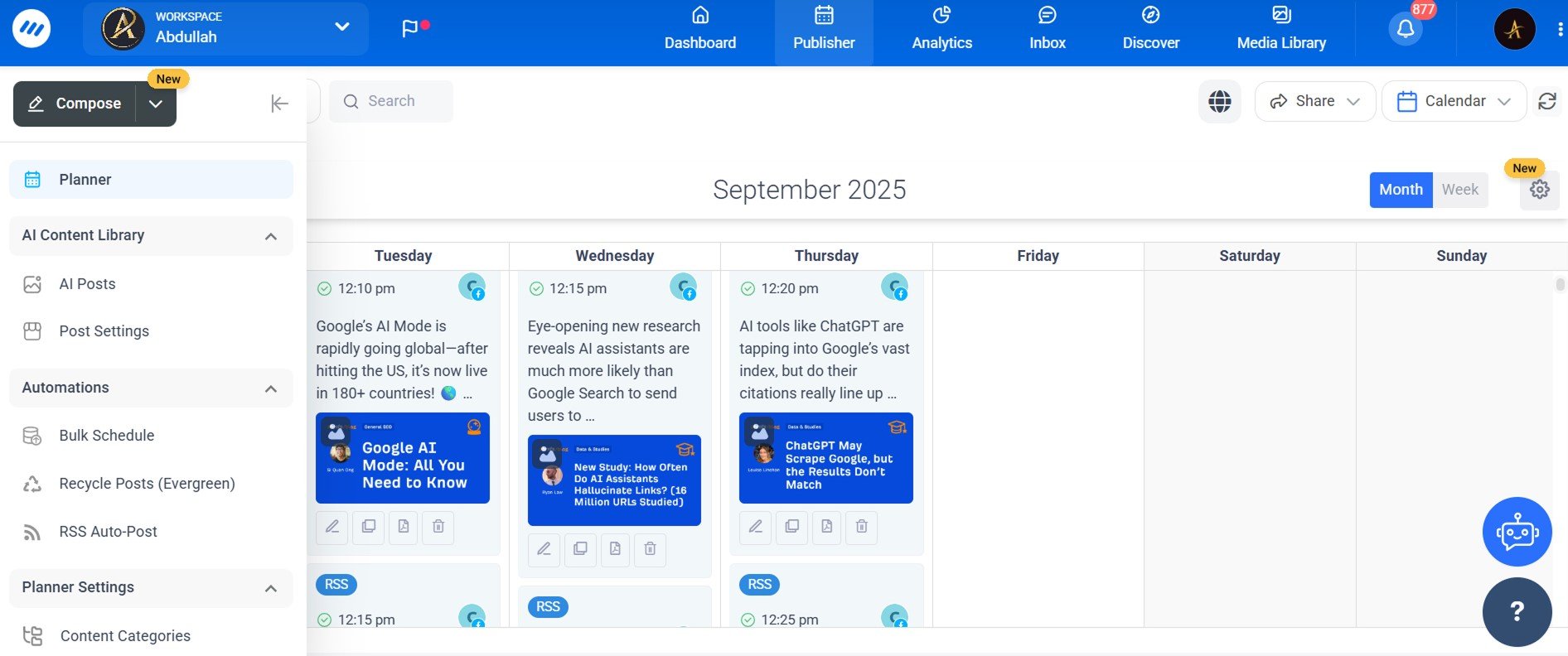
Using a comprehensive social media management tool like ContentStudio streamlines these activities by centralizing campaign oversight, automating routine tasks, and providing actionable insights, all from a single dashboard.
Analyzing social media campaign effectiveness
Successful analysis of social media campaigns focuses on different aspects, including:
- Real-time monitoring: Track campaign performance continuously rather than waiting for end-of-campaign reports. Monitor engagement rates, reach metrics, click-through rates, and conversion data to identify trends and opportunities for optimization.
- A/B testing: Implement systematic testing of different content formats, posting times, captions, and visual elements to identify what resonates most with your audience. Use these insights to refine your approach throughout the campaign.
- Audience feedback analysis: Pay close attention to comments, direct messages, and social mentions to gauge audience sentiment and identify potential issues or opportunities for engagement.
- Competitive benchmarking: Monitor competitor activities and performance to understand industry standards and identify opportunities for differentiation or improvement.
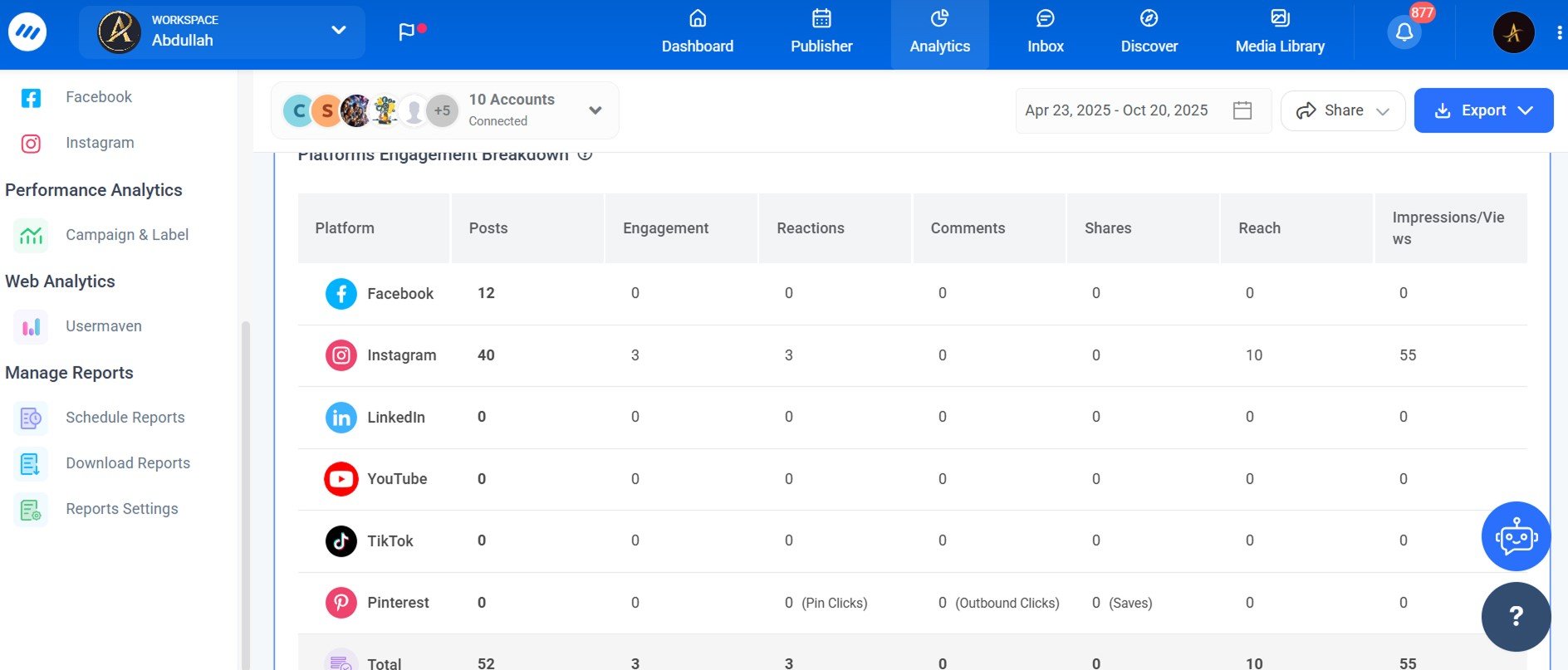
ContentStudio’s analytics feature provides real-time insights across all your connected social channels, allowing you to monitor campaign performance from a single, unified dashboard.
You can track key metrics, including engagement rates, reach, impressions, follower growth, and conversions across Facebook, Instagram, LinkedIn, Pinterest, YouTube, and TikTok simultaneously.
Create a social media campaign report
A social media campaign report can vary from brand to brand. Generally, you should include these components:
- Executive summary: Provide a high-level overview of campaign performance, highlighting key achievements, challenges, and strategic recommendations for future campaigns.
- Performance metrics analysis: Present detailed breakdowns of all tracked KPIs, comparing actual performance against established benchmarks and explaining any significant variances.
- Content performance insights: Identify top-performing content pieces, optimal posting times, and audience engagement patterns to inform future content strategies.
- ROI calculation: Calculate comprehensive return on investment by comparing campaign costs against generated revenue, leads, or other valuable outcomes.
- Strategic recommendations: Based on performance data and insights, provide specific recommendations for improving future campaigns, including budget allocation, platform focus, and content strategy adjustments.
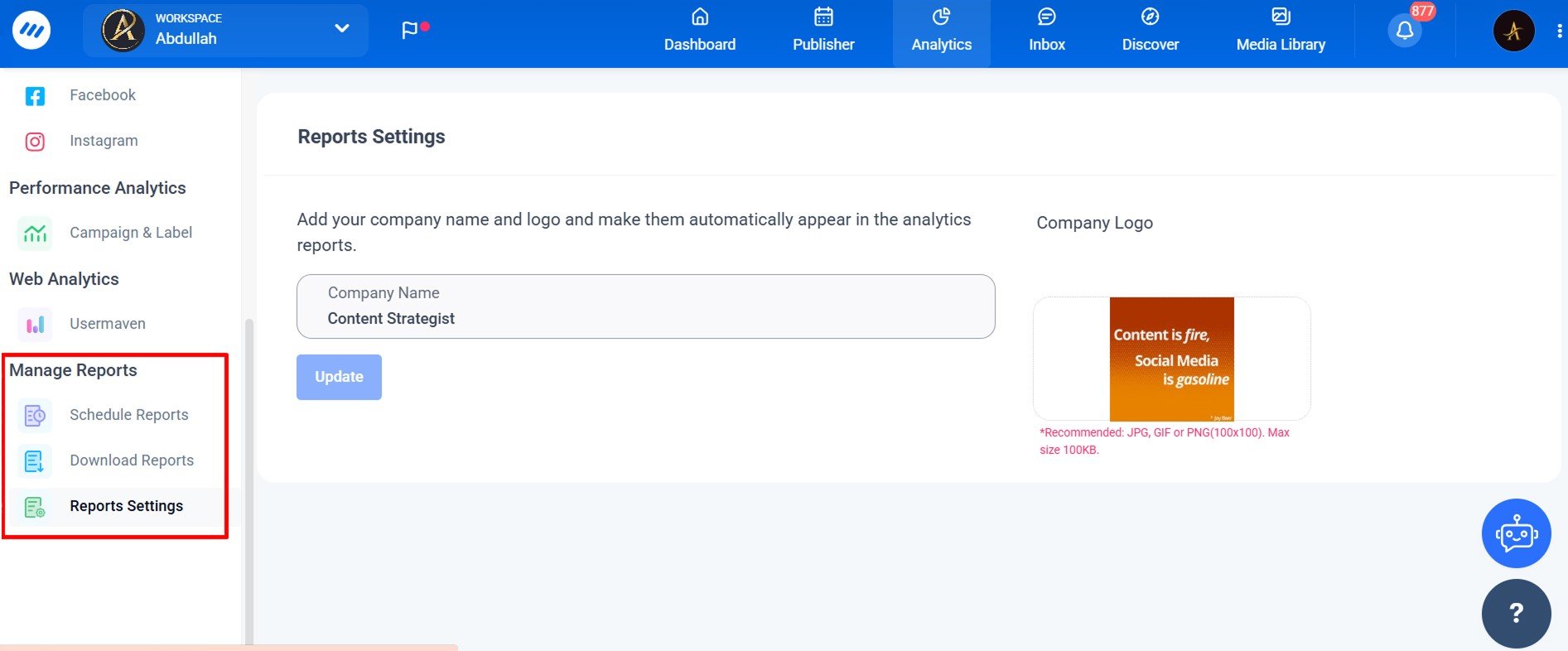
ContentStudio’s reporting feature allows you to create professional reports that reflect your brand identity. You can customize reports with your company’s logo, brand colors, and visual elements to maintain consistency when sharing results with stakeholders, clients, or team members. This white-labeling capability ensures your reports look polished and professional while reinforcing your brand presence.
Top 5 Social media campaign management tools
The right tools make social media campaign management exponentially more efficient, enabling you to execute strategies without drowning in manual tasks. Here are the top platforms for managing social media campaigns in 2025:
1. ContentStudio
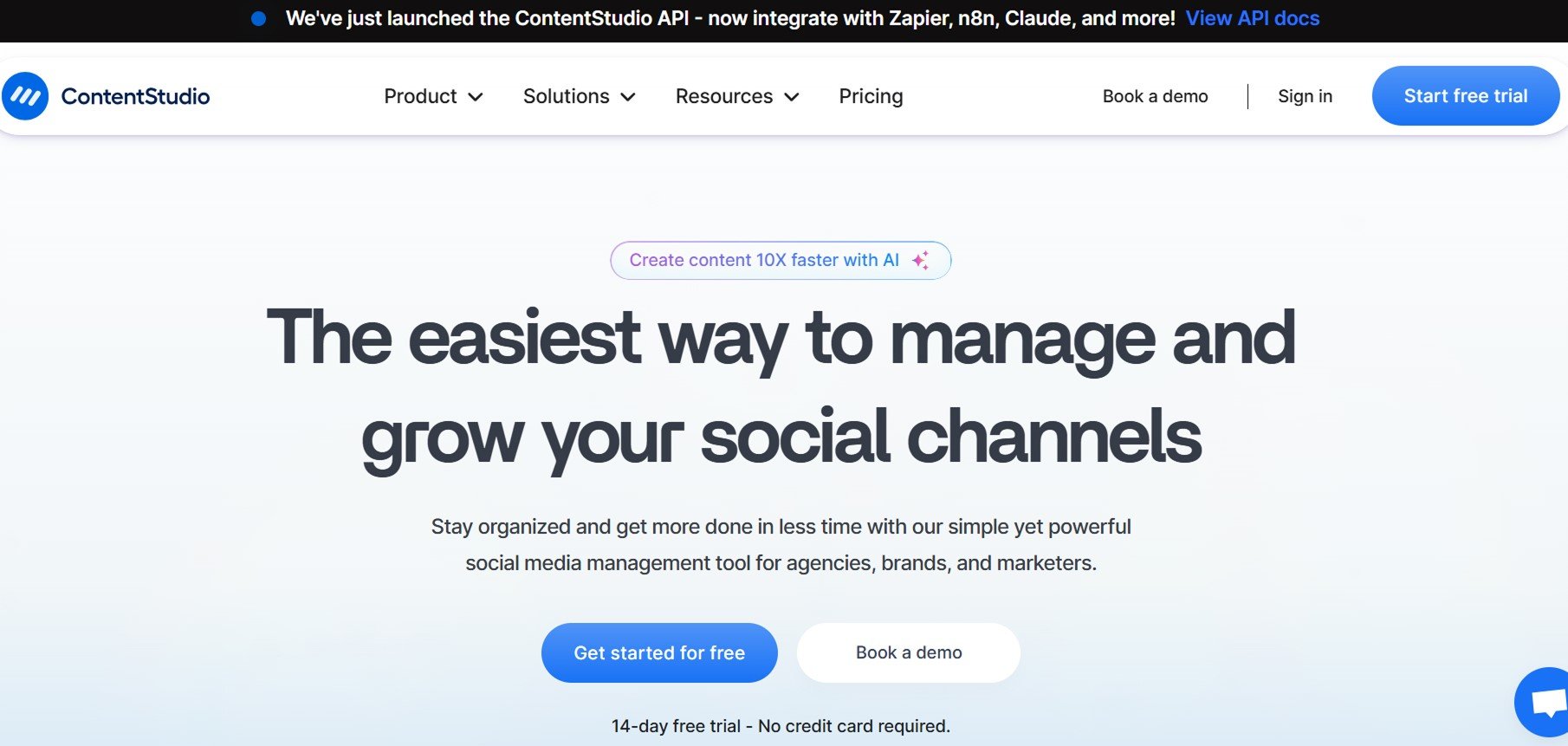
ContentStudio stands out as a comprehensive, all-in-one social media management platform designed for agencies, brands, and marketers managing multiple campaigns across numerous platforms. Its unified dashboard brings together content planning, scheduling, publishing, engagement, and analytics.
Key features for campaign management:
- Multi-platform scheduling: Plan and publish content across Facebook, Instagram, LinkedIn, Twitter, Pinterest, YouTube, and Google Business Profile from one interface
- Content calendar visualization: See your entire campaign timeline at a glance with drag-and-drop scheduling
- AI-powered content creation: Generate post ideas, captions, hashtags, and even images, aligned with campaign themes
- Social inbox: Monitor and respond to all comments, messages, and mentions across platforms without switching between apps
- Advanced analytics: Track campaign performance with customizable reports, competitor analysis, and influencer discovery
- Team collaboration: Assign tasks, set approval workflows, and coordinate campaign execution across team members
ContentStudio’s strength lies in its balance of powerful features and an intuitive interface, making sophisticated campaign management accessible without overwhelming complexity. The platform is useful for brands and users managing campaigns across multiple client accounts or brand portfolios.
2. Hootsuite
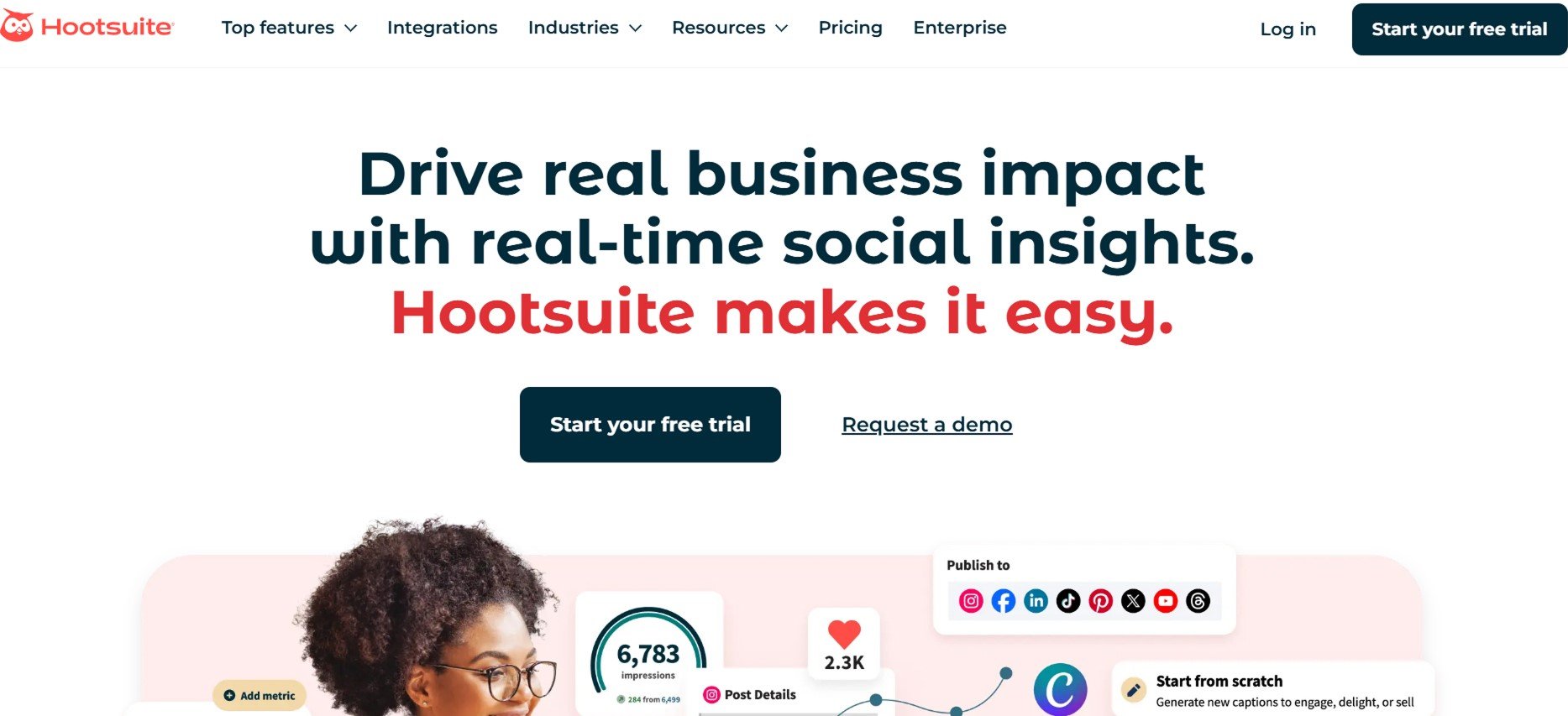
Hootsuite is one of the pioneers of social media management tools and remains a popular choice for enterprise-level campaign management. Its comprehensive platform supports campaign planning, execution, monitoring, and measurement across all major social networks.
Notable features include robust team collaboration tools, extensive third-party integrations, and enterprise-grade security. Hootsuite works well for large organizations managing complex campaigns with multiple stakeholders and approval processes.
Related: 16 best Hootsuite alternatives for marketing agencies in 2025
3. Sprout Social
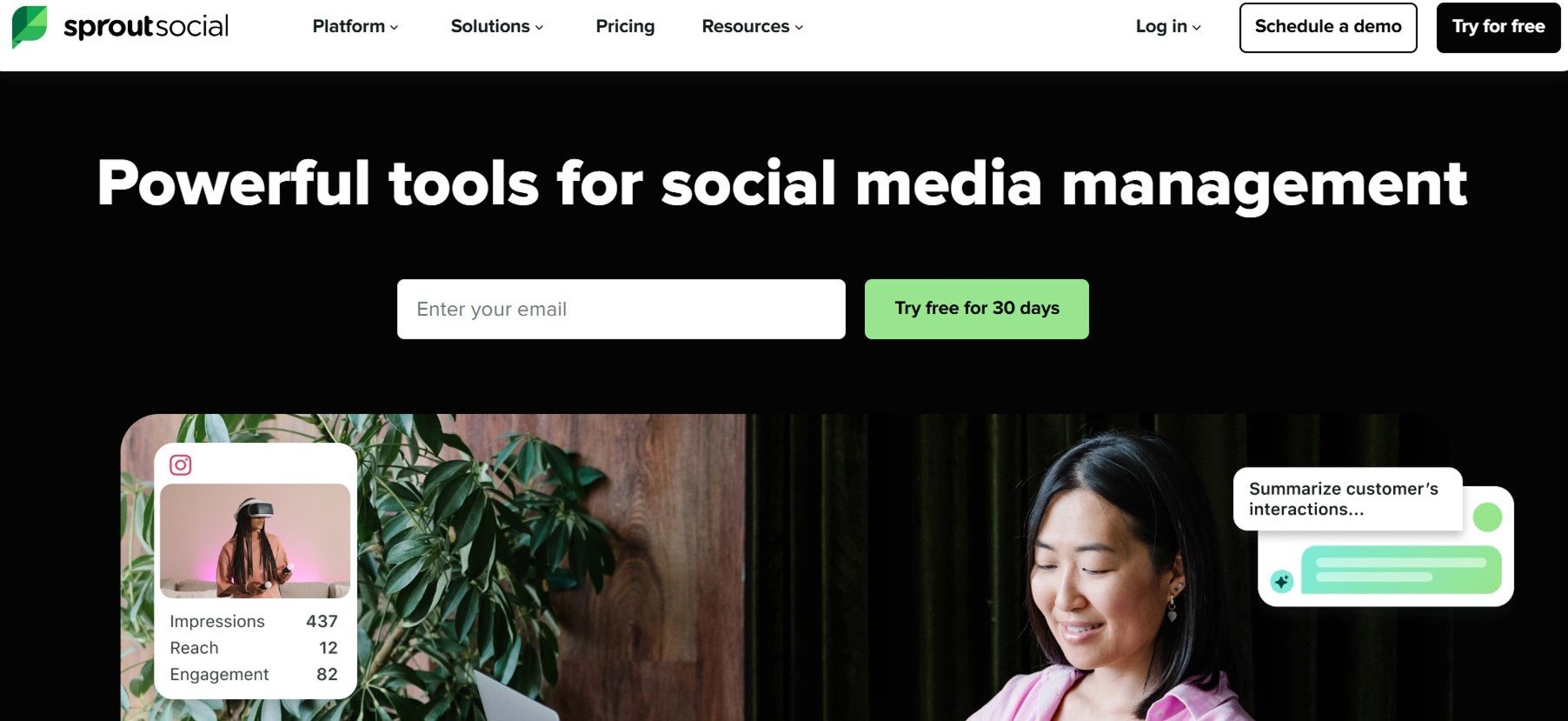
Sprout Social emphasizes analytics and social listening, making it ideal for data-driven campaign management. Its elegant interface presents complex data in easily digestible formats, helping marketers quickly identify trends and optimization opportunities.
The platform’s Smart Inbox consolidates messages across networks, while its publishing tools enable sophisticated scheduling strategies. Sprout Social particularly shines for brands prioritizing customer relationship management through social channels.
Related: 12 Best Sprout Social alternatives for effective social media management
4. Native social media tools
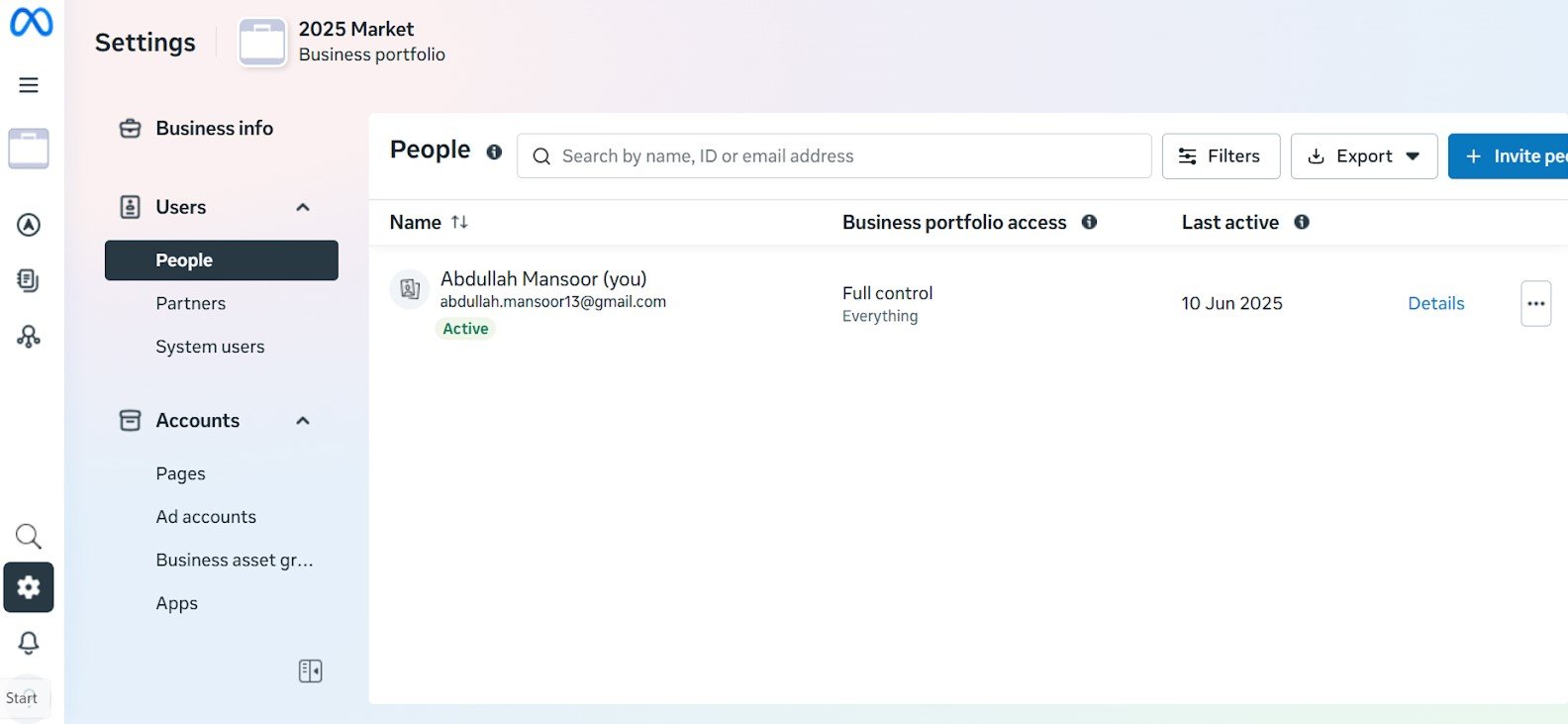
Major social media platforms like Meta (Facebook and Instagram), LinkedIn, and Pinterest offer their own native management tools that can be effective for single-platform or platform-specific campaigns. Meta Business Suite, for example, allows you to manage Facebook and Instagram content, ads, and insights from one dashboard.
These native tools provide deep integration with platform features, often getting early access to new functionalities before third-party tools. They’re completely free and offer robust analytics specific to each platform.
However, they lack cross-platform management capabilities, making them best suited for businesses focusing heavily on one or two platforms rather than multi-channel campaigns. For comprehensive campaign management across multiple networks, dedicated tools like ContentStudio offer superior efficiency.
Also read: What is Meta Business Suite & how to use it?
5. Agorapulse
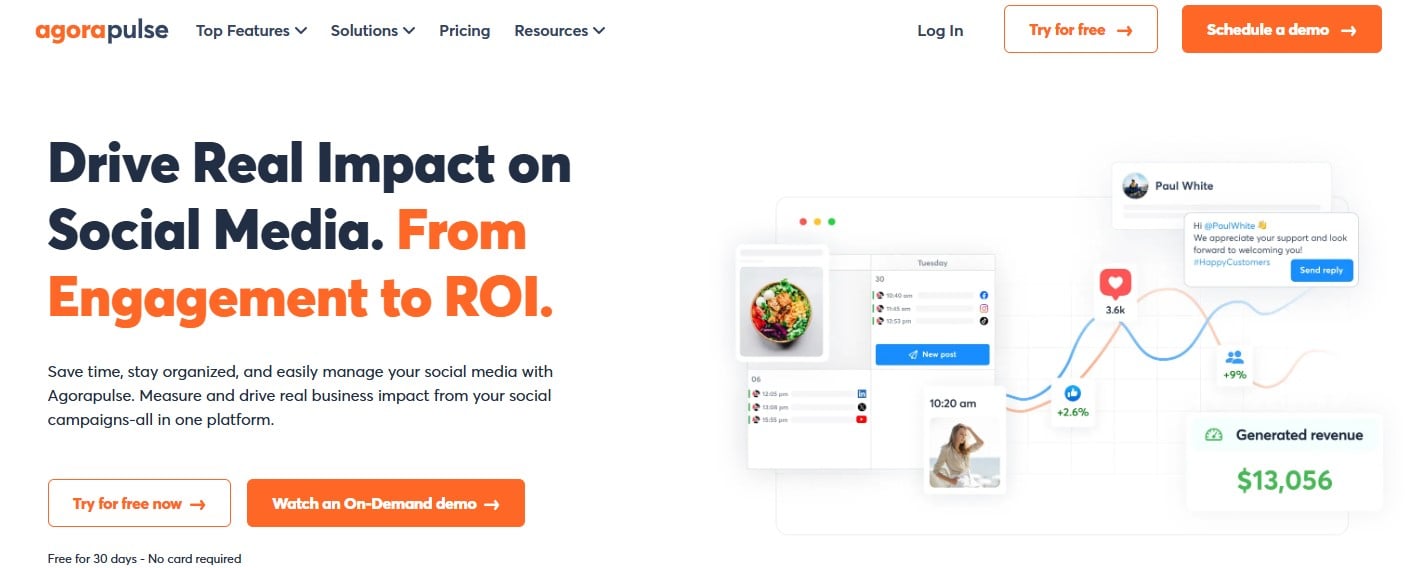
Agorapulse combines powerful features with a user-friendly design, offering robust social listening, inbox management, and reporting capabilities. Its campaign-specific features include content labeling for easy performance tracking and ROI calculation.
The platform’s social media monitoring capabilities help brands stay on top of brand mentions, competitor activity, and industry trends—valuable intelligence for campaign optimization. Agorapulse works particularly well for agencies managing campaigns for multiple clients.
Related: 16 best Agorapulse alternatives for agencies and marketers
Choosing the right tool
When selecting a social media campaign management tool, consider:
- Number of social profiles you manage
- Platforms you use most frequently
- Team size and collaboration needs
- Budget constraints
- Required analytics depth
- Integration requirements with the existing marketing stack
Most platforms offer free trials, including ContentStudio, so test several options with a sample campaign before committing to annual contracts.
Social media platforms to invest in for successful social media campaigns
Not all social media platforms deliver equal returns for every business or campaign type. Strategic platform selection based on your audience, objectives, and resources dramatically improves campaign effectiveness.
Here’s where to invest your efforts in 2025:
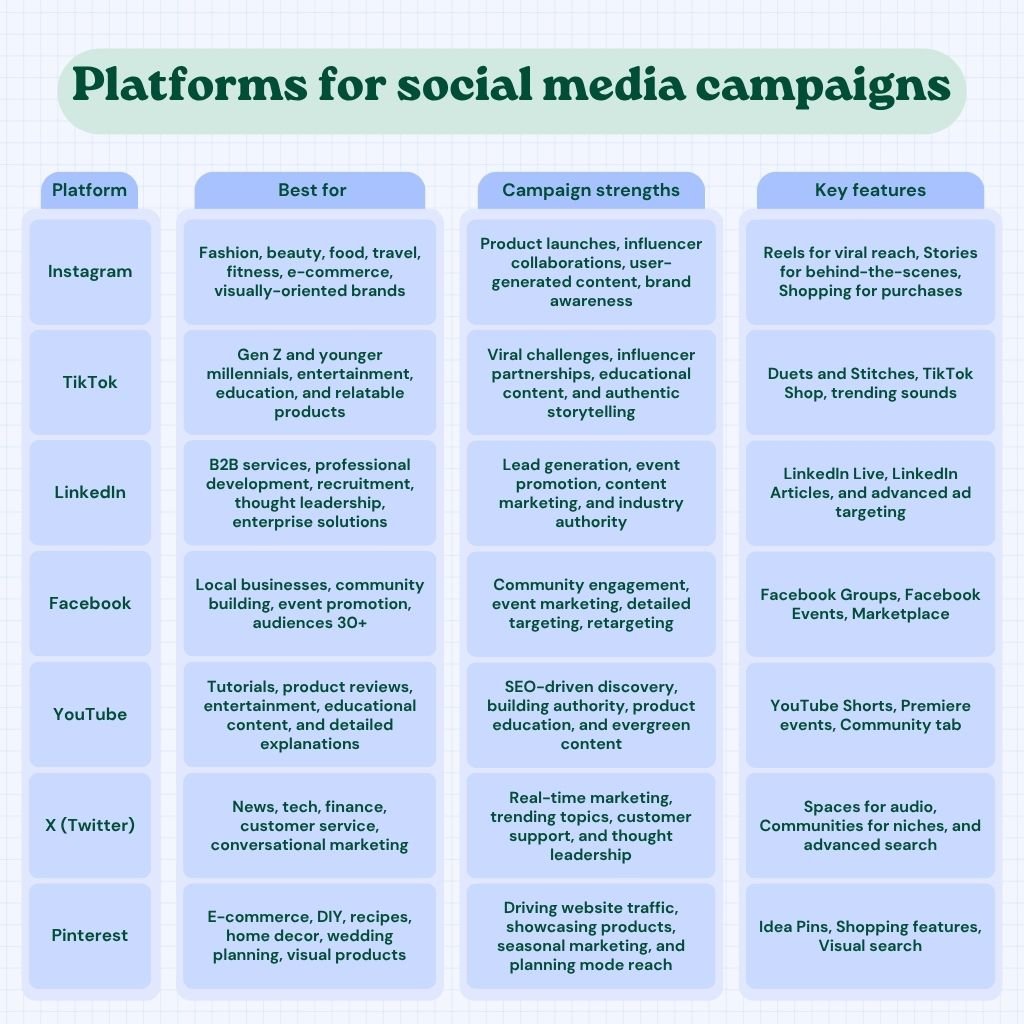
Platform prioritization strategy
Rather than spreading resources thin across every platform, focus on 2-4 platforms where your audience is most active and engaged. Audit where your target customers spend time, where competitors succeed, and where your content format naturally fits.
Consider a tiered approach:
- Primary platforms (60-70% of resources): Where your core audience lives and engages most
- Secondary platforms (20-30% of resources): Platforms with growth potential or niche audience segments
- Experimental platforms (10-15% of resources): Emerging platforms where you’re testing viability
Remember that platform algorithms reward consistency and quality over quantity. It’s better to excel on two platforms than to maintain a mediocre presence across six.
10 social media campaign ideas for inspiration
Feeling stuck in a creative rut? These campaign concepts have proven effective across industries and can be adapted to virtually any business:
1. User-generated content challenge
Invite your audience to create content featuring your product or brand, using a campaign-specific hashtag. Offer prizes for the best submissions or simply feature participants on your channels.
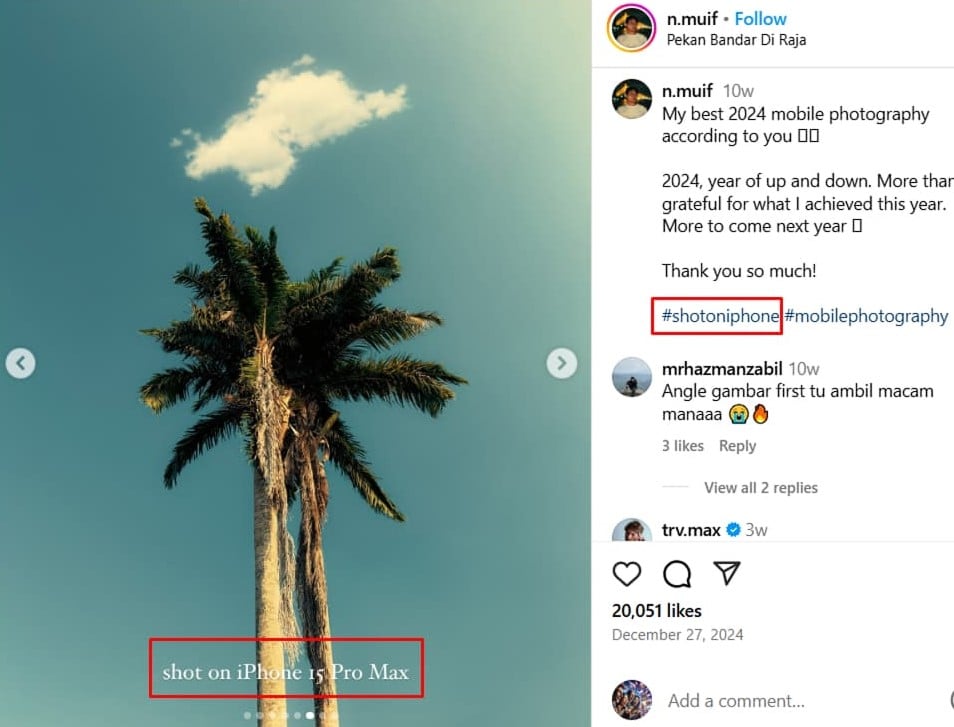
Why it works: UGC campaigns generate authentic content, increase engagement, expand reach through participants’ networks, and build community around your brand. They’re also cost-effective since your audience creates the content.
2. Behind-the-scenes campaign
Pull back the curtain on your business operations, product development, team culture, or creative process. Humanizing your brand builds emotional connections and differentiates you from competitors.
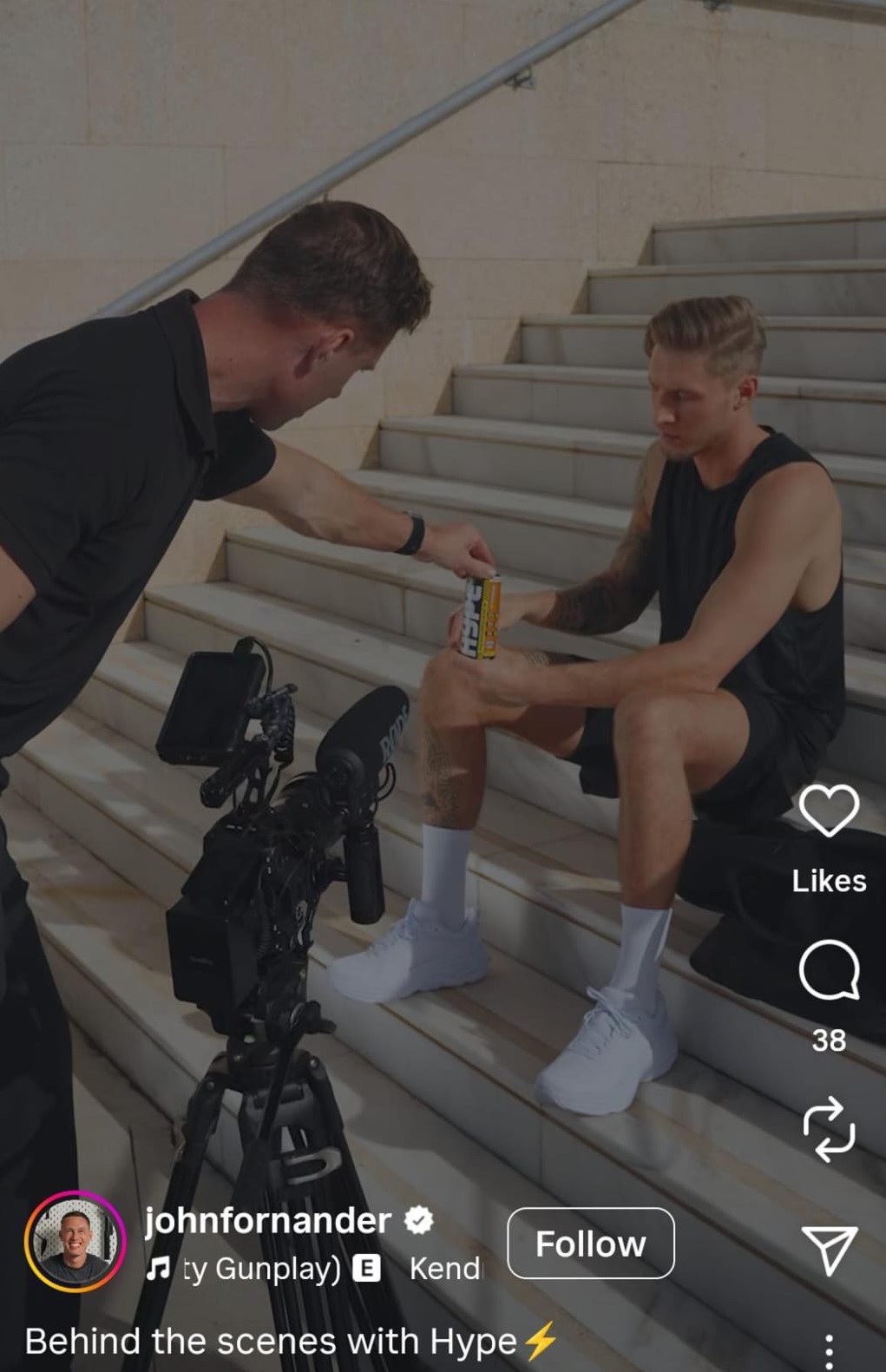
Why it works: Audiences crave authenticity and transparency. Behind-the-scenes content satisfies curiosity, demonstrates expertise, and makes your brand more relatable and trustworthy.
3. Social cause partnership
Align your brand with a cause your audience cares about, donating a portion of proceeds or volunteering time. Document and share your impact throughout the campaign.
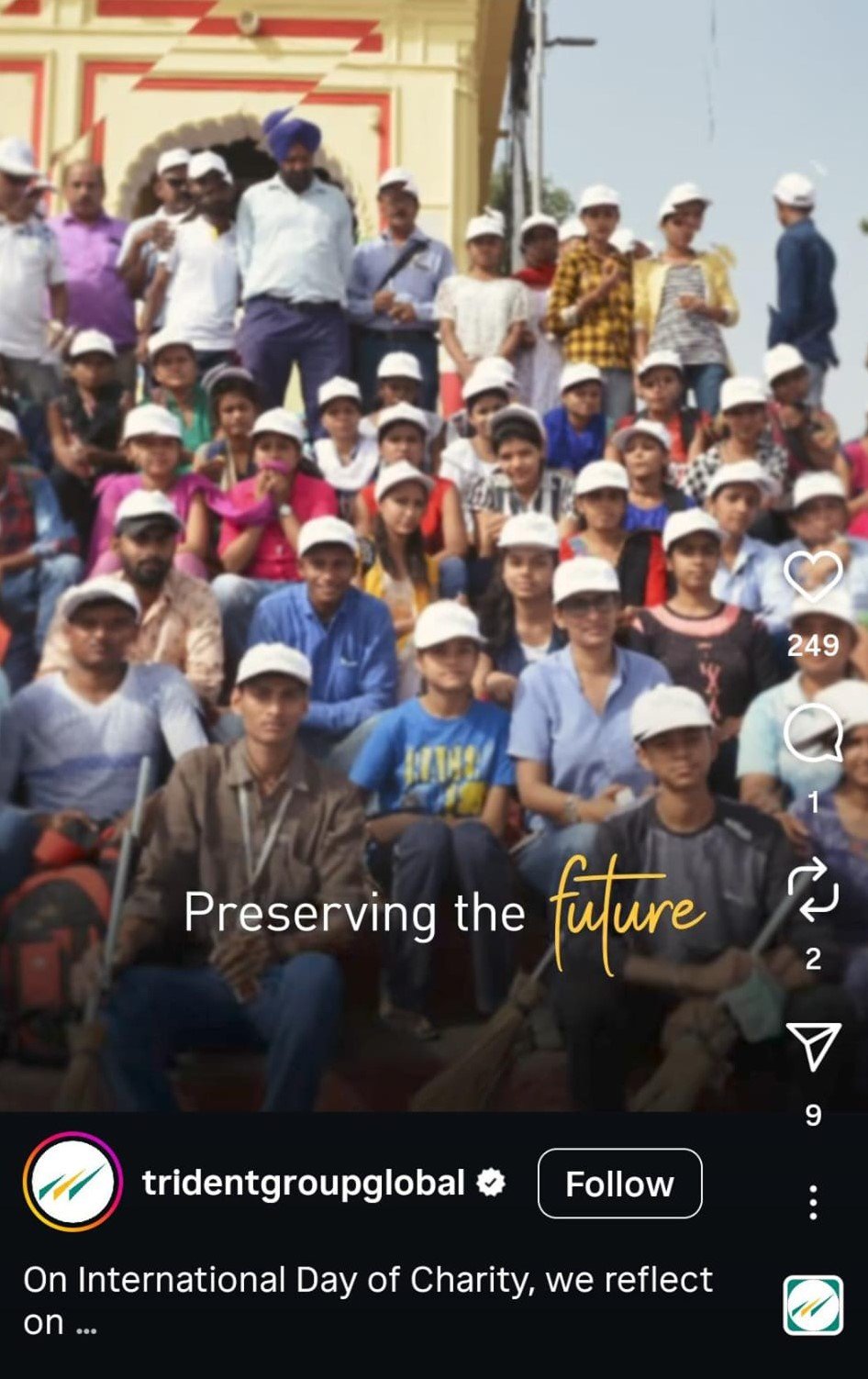
Why it works: Purpose-driven campaigns resonate emotionally, attract values-aligned customers, generate positive PR, and demonstrate social responsibility beyond profit motives.
4. Interactive polls and quizzes
Create engaging polls, quizzes, or “this or that” content that encourages participation. Use results to inform product development or simply entertain your audience.
Why it works: Interactive content drives engagement, provides valuable audience insights, is easily shareable, and performs well with platform algorithms that reward participation.
5. Limited-time offer campaign
Create urgency with flash sales, exclusive discounts, or limited-edition products available only during your campaign period. Countdown timers and scarcity messaging amplify effectiveness.
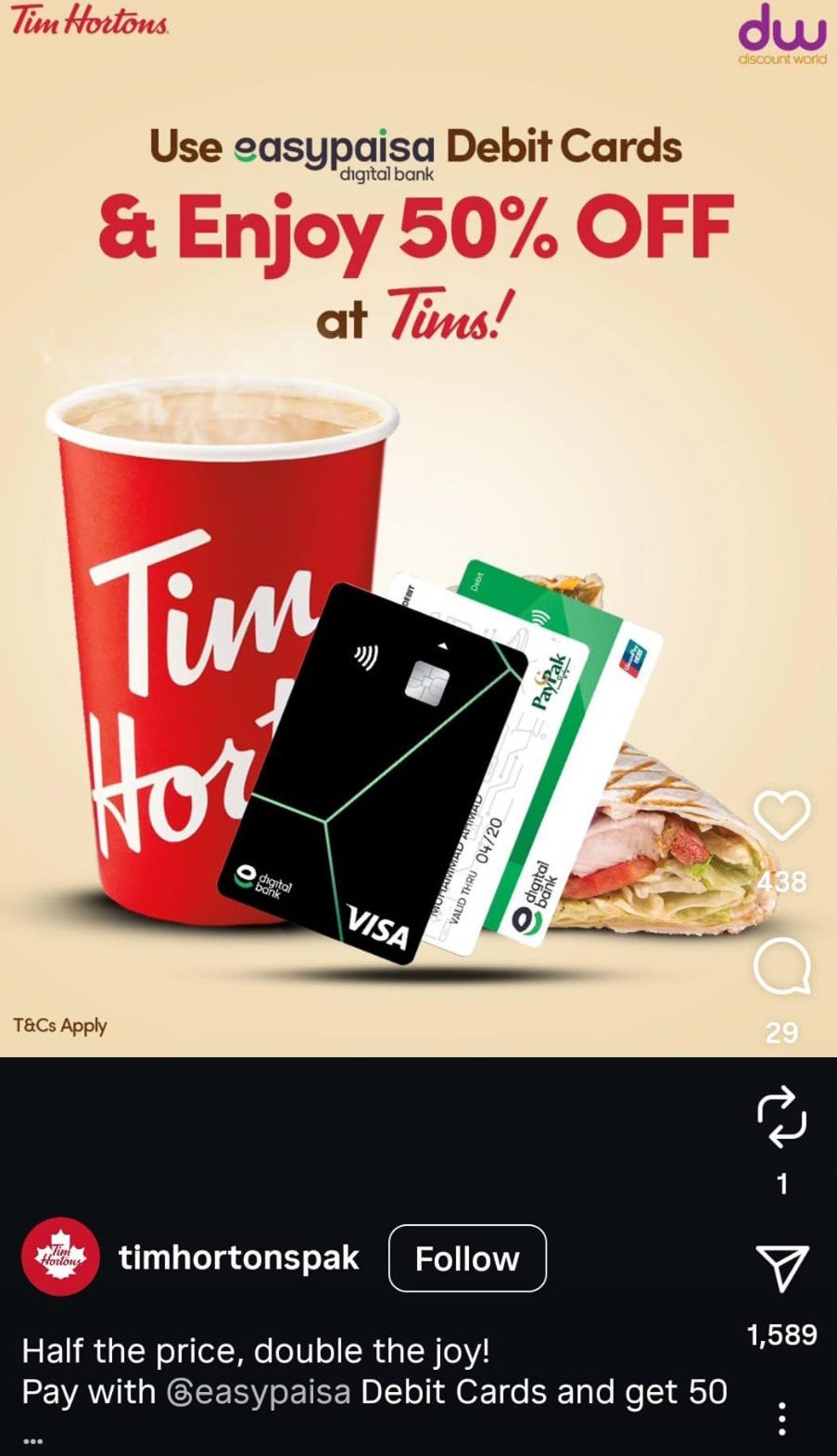
Why it works: Urgency triggers fear of missing out (FOMO), accelerating purchase decisions. Time-bound offers concentrate attention and action within your campaign window.
6. Influencer takeover
Hand over your social media accounts to an influencer or industry expert for a day, letting them share their perspective, answer questions, or create content for your audience.
Why it works: Takeovers introduce your brand to the influencer’s audience, provide fresh content perspectives, generate curiosity and engagement, and position your brand as collaborative and innovative.
7. Countdown campaign
Build anticipation for a product launch, event, or announcement with daily countdown content revealing teasers, features, or behind-the-scenes glimpses.
Why it works: Countdown campaigns create sustained momentum, keeping your audience engaged over multiple days. Anticipation builds excitement that culminates in a strong launch-day performance.
8. Testimonial spotlight series
Feature customer success stories, testimonials, or case studies throughout your campaign, highlighting how your product or service solves real problems.
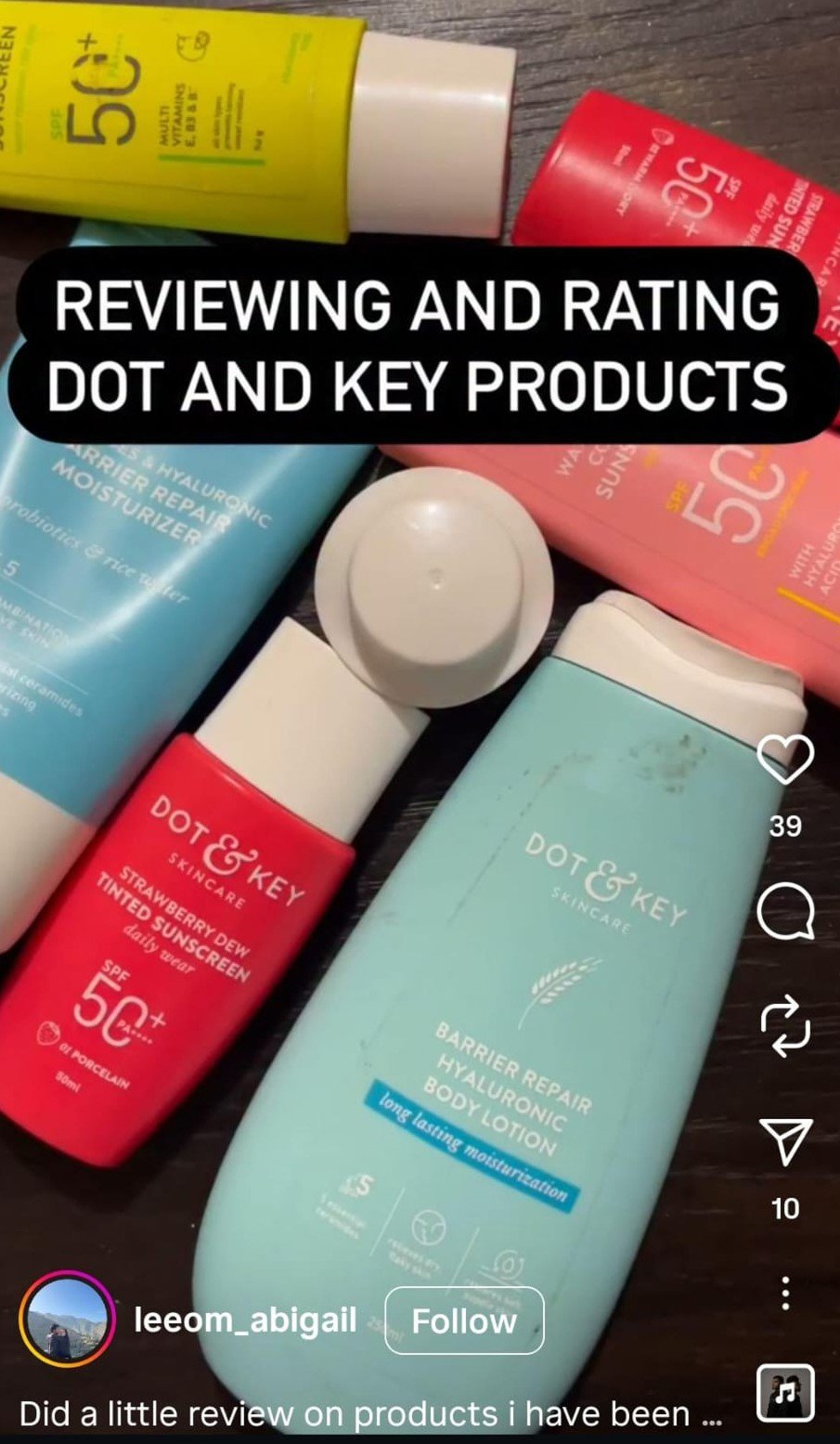
Why it works: Social proof is one of the most powerful conversion drivers. Real customer stories are more persuasive than brand messaging, build credibility, and address objections.
9. Educational content series
Create a multi-part educational campaign teaching your audience valuable skills or knowledge related to your industry. Position your product as a tool for implementing what they learn.
Why it works: Educational campaigns build authority, provide value that audiences appreciate and share, create natural opportunities for product integration, and attract audiences in research mode.
10. Seasonal or holiday campaign
Tie your campaign to seasonal events, holidays, or cultural moments relevant to your audience. Create themed content, offers, or experiences aligned with the occasion.
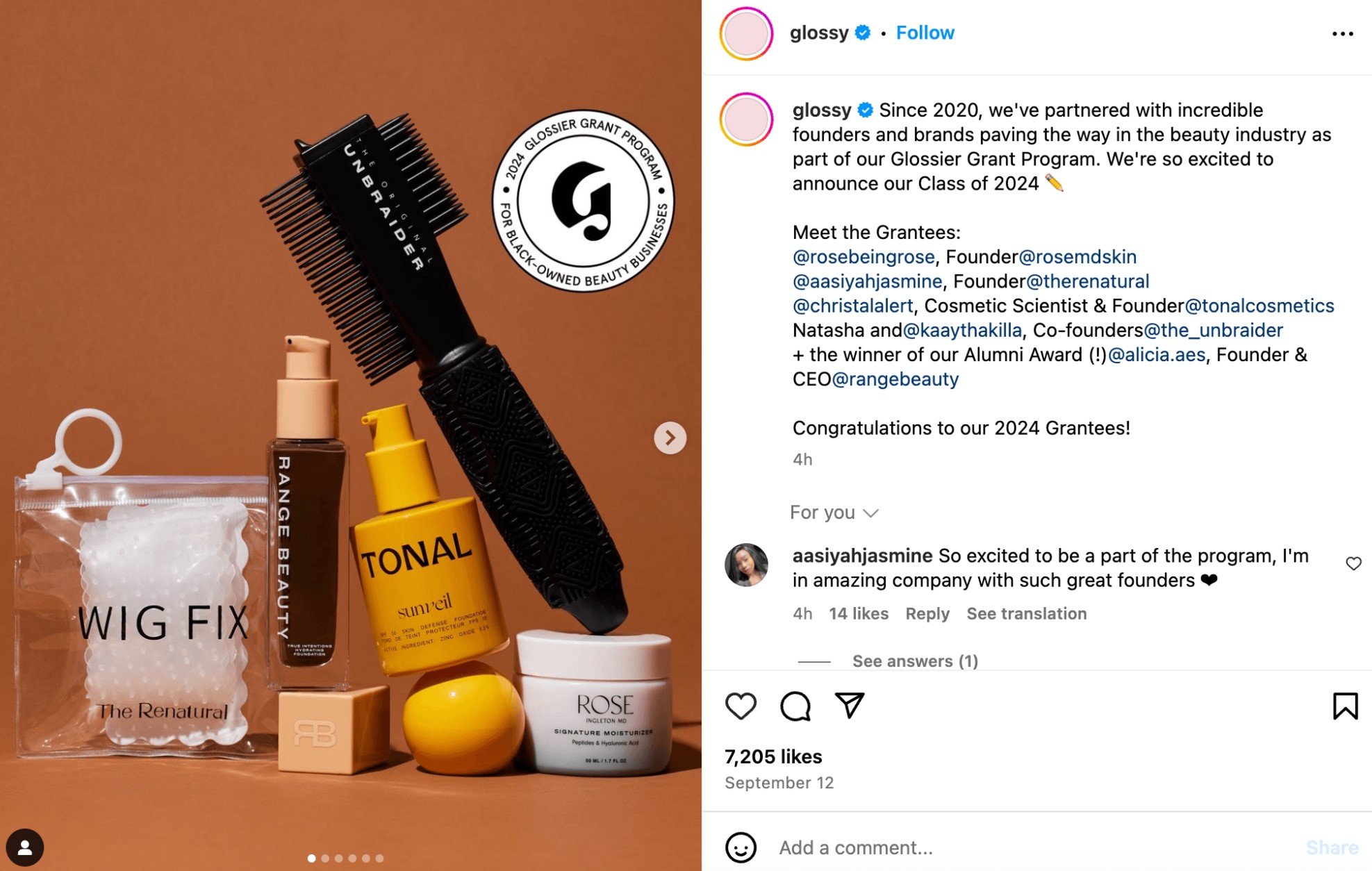
Why it works: Seasonal campaigns capitalize on existing consumer attention and spending patterns. Holiday shoppers actively seek relevant content, making them receptive to well-timed campaigns.
H2: The most successful social media campaign examples from 2025
Learning from the best social media campaigns provides inspiration and practical insights for your own efforts. While 2025 is still unfolding, here are standout examples from recent years that demonstrate campaign excellence:
- Nike’s “Just Do It” campaign: Nike’s latest iteration of their iconic Just Do It campaign used user-generated content and personalized messaging to achieve a massive increase in engagement rates and online sales. The company has also reframed its iconic line to “Why Do It?” to engage next-gen athletes.
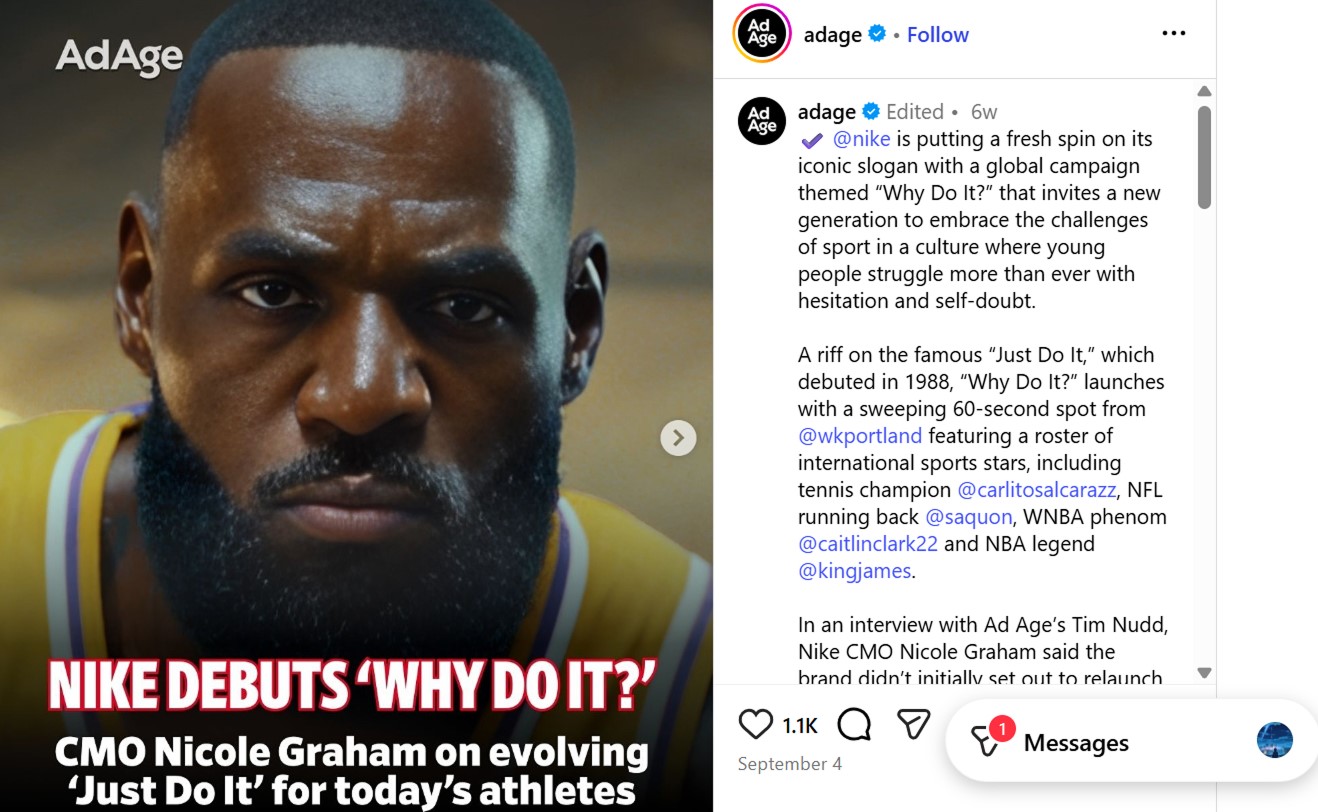
- Duolingo’s TikTok personality campaign: The language learning app’s mascot became a TikTok sensation through consistently entertaining and relatable content, resulting in an increase in app downloads and massive brand awareness among Gen Z users.
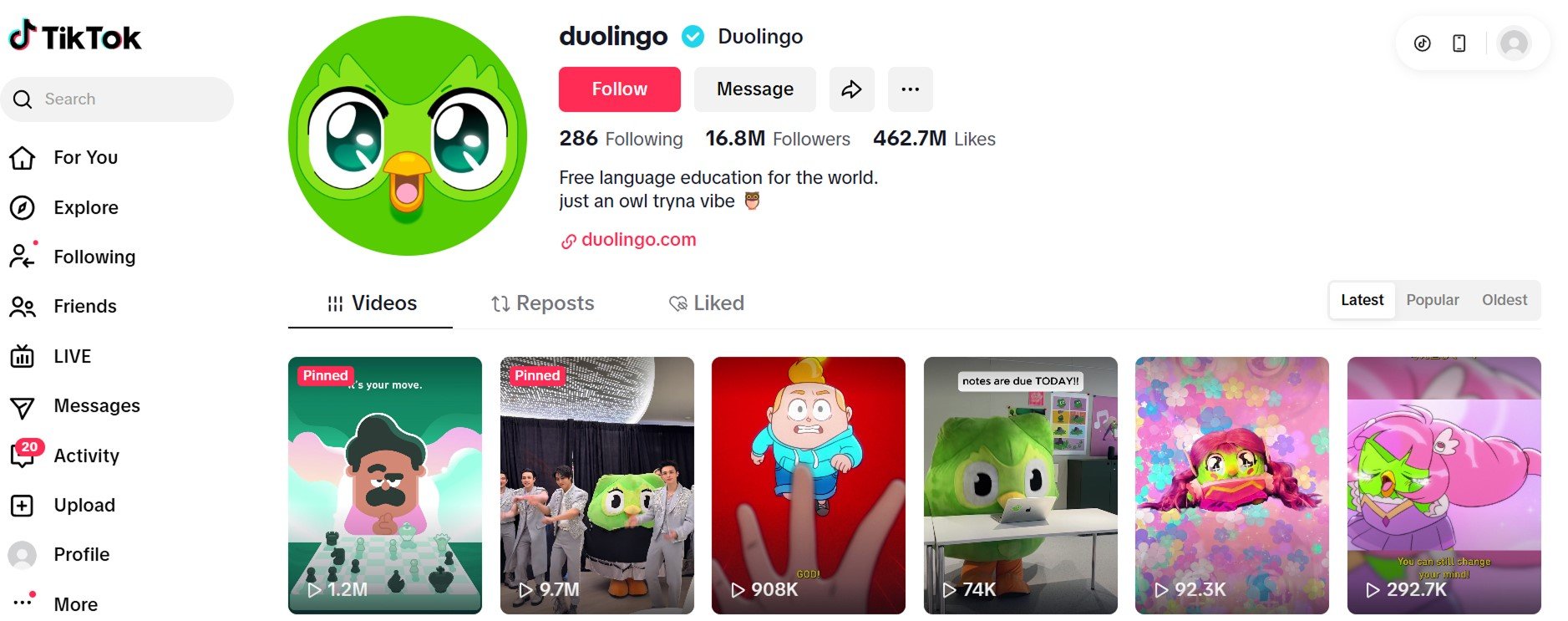
- Dove’s #DetoxYourFeed campaign: Dove tackled toxic beauty standards on social media with a campaign encouraging users to curate healthier feeds. The campaign combined educational content about social media’s impact on self-esteem with practical tools and partnerships with body-positive creators.
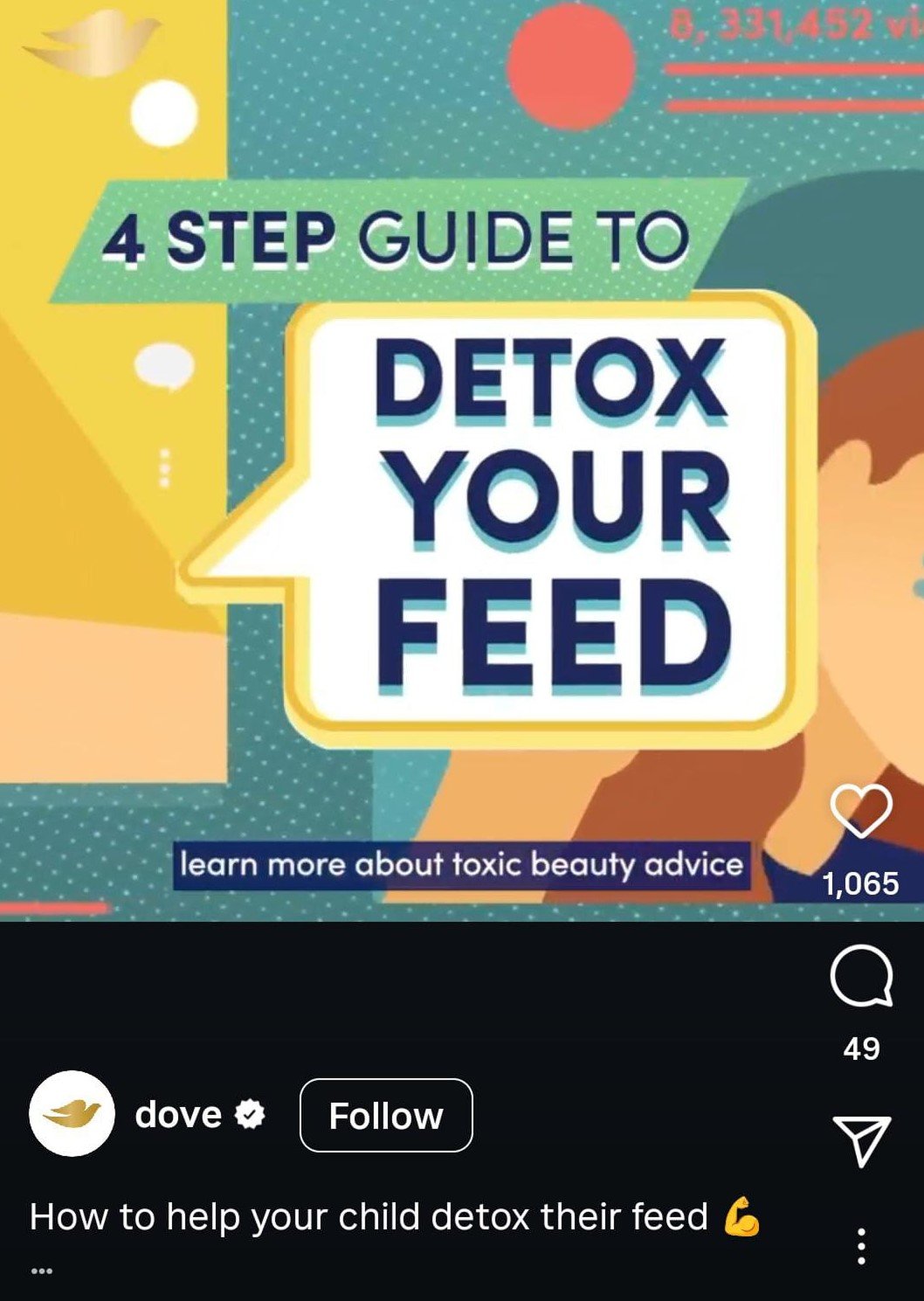
- Wendy’s X roast campaign: Continuing their bold social media presence, Wendy’s strategic use of humor and cultural relevance on Twitter maintained their position as a standout fast-food brand, driving significant earned media value.
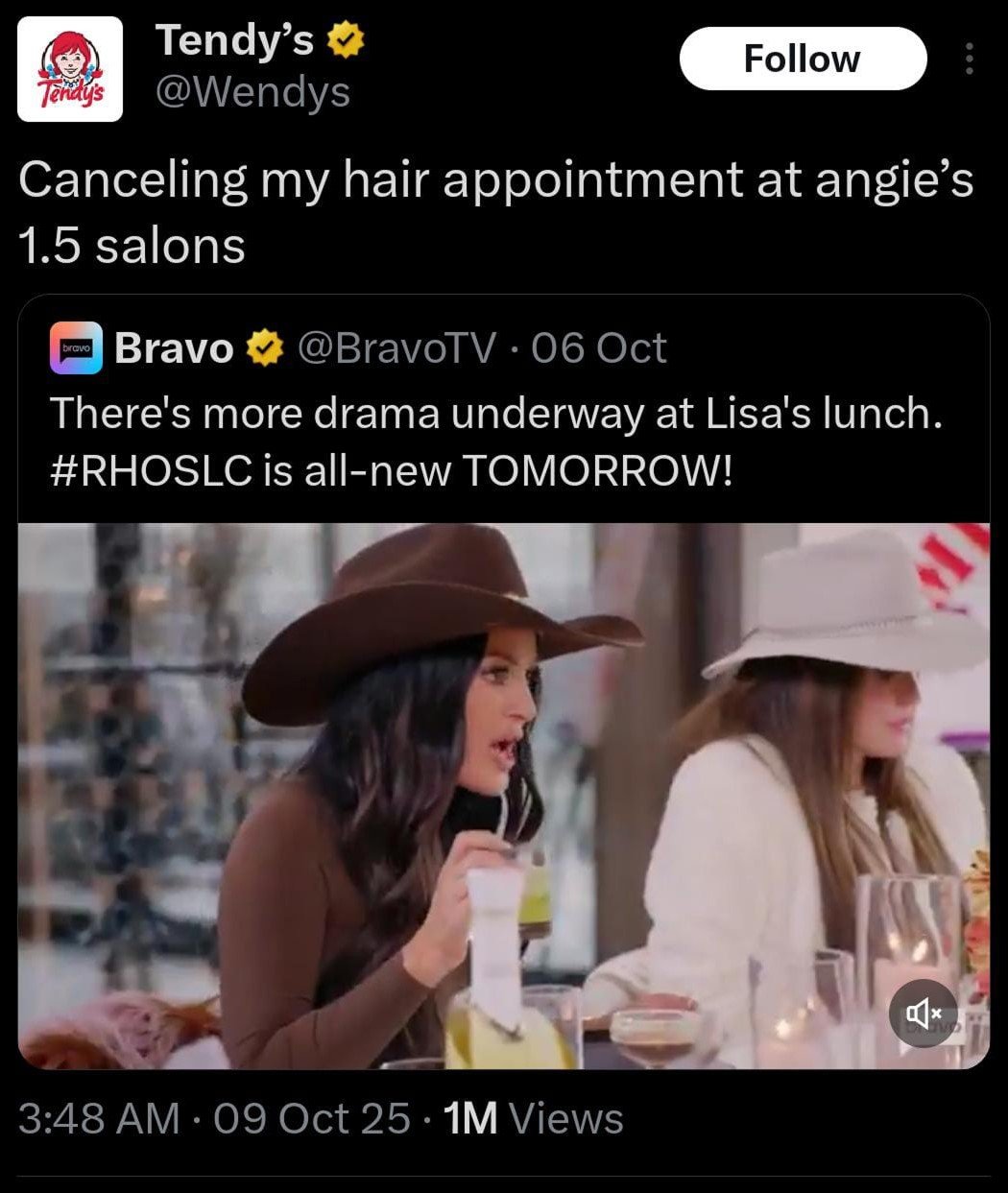
Conclusion
Creating a high ROI social media campaign in 2025 requires a strategic blend of data-driven planning, creative content development, and continuous optimization. Success comes from understanding your audience deeply, choosing the right platforms and tools, and maintaining consistent, valuable engagement throughout your campaign lifecycle.
The key to maximizing return on investment lies in treating social media campaigns as integrated business initiatives rather than isolated marketing activities. By aligning campaign objectives with broader business goals, leveraging appropriate technology solutions, and maintaining flexibility to adapt based on real-time performance data, brands can achieve exceptional results.
With tools like ContentStudio simplifying campaign management, even small teams can execute sophisticated, multi-platform campaigns that compete with enterprise brands. The playing field has never been more level, and the opportunities have never been greater.
Start with one campaign. Test your assumptions. Learn from the data. Iterate and improve. Before you know it, you’ll have developed the expertise and confidence to create social media campaigns that consistently deliver impressive returns on investment.
Your audience is waiting. What story will you tell them?
FAQs
What are social media campaigns?
Social media campaigns are coordinated marketing efforts that use social media platforms to achieve specific business objectives within a defined timeframe. They involve strategic planning, targeted content creation, and systematic execution across one or more social networks to drive measurable results such as brand awareness, engagement, lead generation, or sales conversions.
How to create a social media campaign?
To create an effective social media campaign:
1. Define clear, measurable objectives aligned with business goals
2. Research and identify your target audience
3. Choose appropriate social media platforms
4. Develop a comprehensive content strategy
5. Set realistic budgets and timelines
6. Create engaging, platform-specific content
7. Implement tracking and analytics
8. Launch and monitor performance
9. Optimize based on real-time data
10. Analyze results and document learnings for future campaigns.
What are the 5 stages of a social media campaign?
The five stages of a social media campaign are:
1. Planning stage: Define objectives, research audience, develop a strategy, create a content calendar, and allocate resources.
2. Creation stage: Develop creative assets, including graphics, videos, copy, and other content. Build out landing pages, set up tracking pixels, and prepare all campaign materials for launch.
3. Launch stage: Publish initial content, activate paid advertising, and begin community engagement. T
4. Management stage: Monitor performance metrics, respond to audience interactions, optimize underperforming elements, and adjust tactics based on real-time data.
5. Analysis stage: Evaluate campaign results against objectives, calculate ROI, identify key learnings, and document insights for future campaigns.
How do you present a social media campaign?
To present a social media campaign effectively: Start with an executive summary, include audience insights and platform choices, showcase creative visuals, outline the timeline and budget, define KPIs and success metrics, address challenges with solutions, and end with clear next steps. Use visuals and data to keep it engaging and persuasive. If you use ContentStudio, it becomes easier and quicker to export a well-formatted report of a social media campaign.
Recommended for you


Powerful social media management software
14-day free trial - No credit card required.
